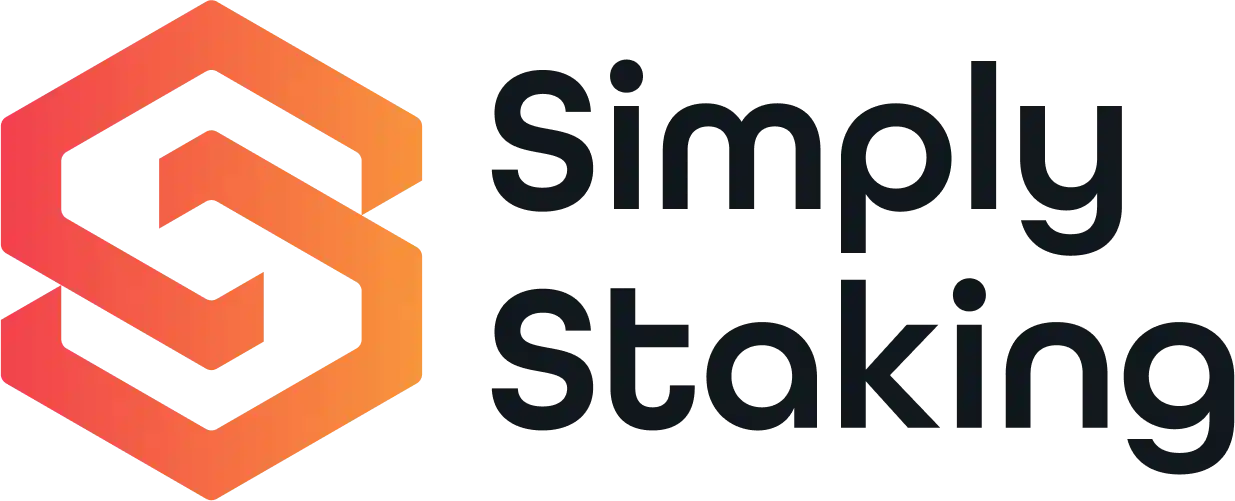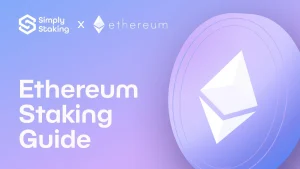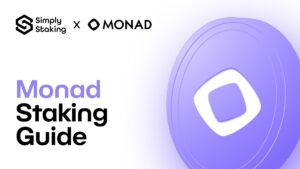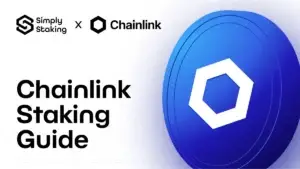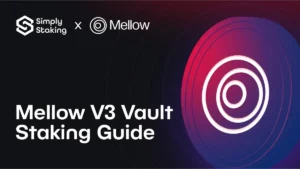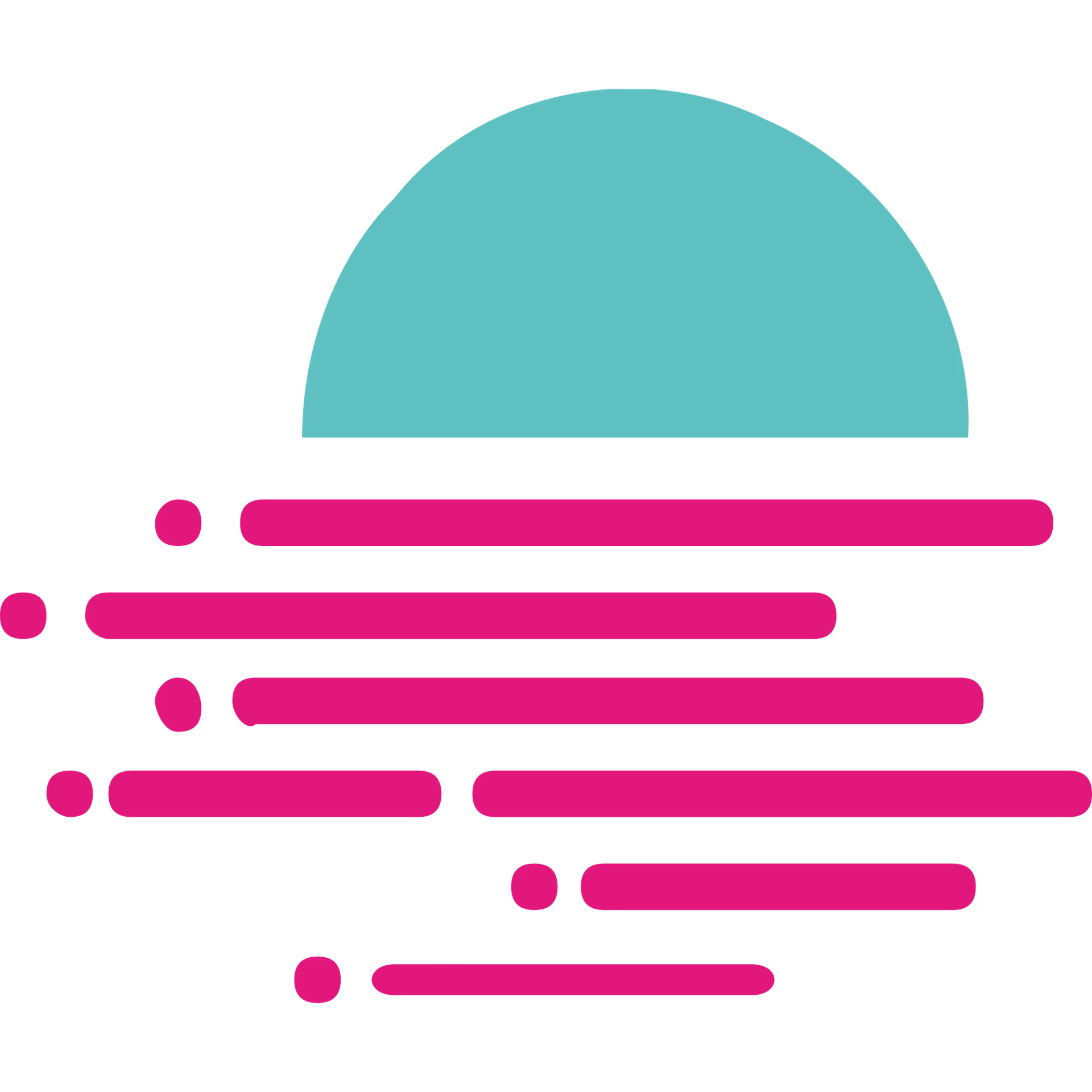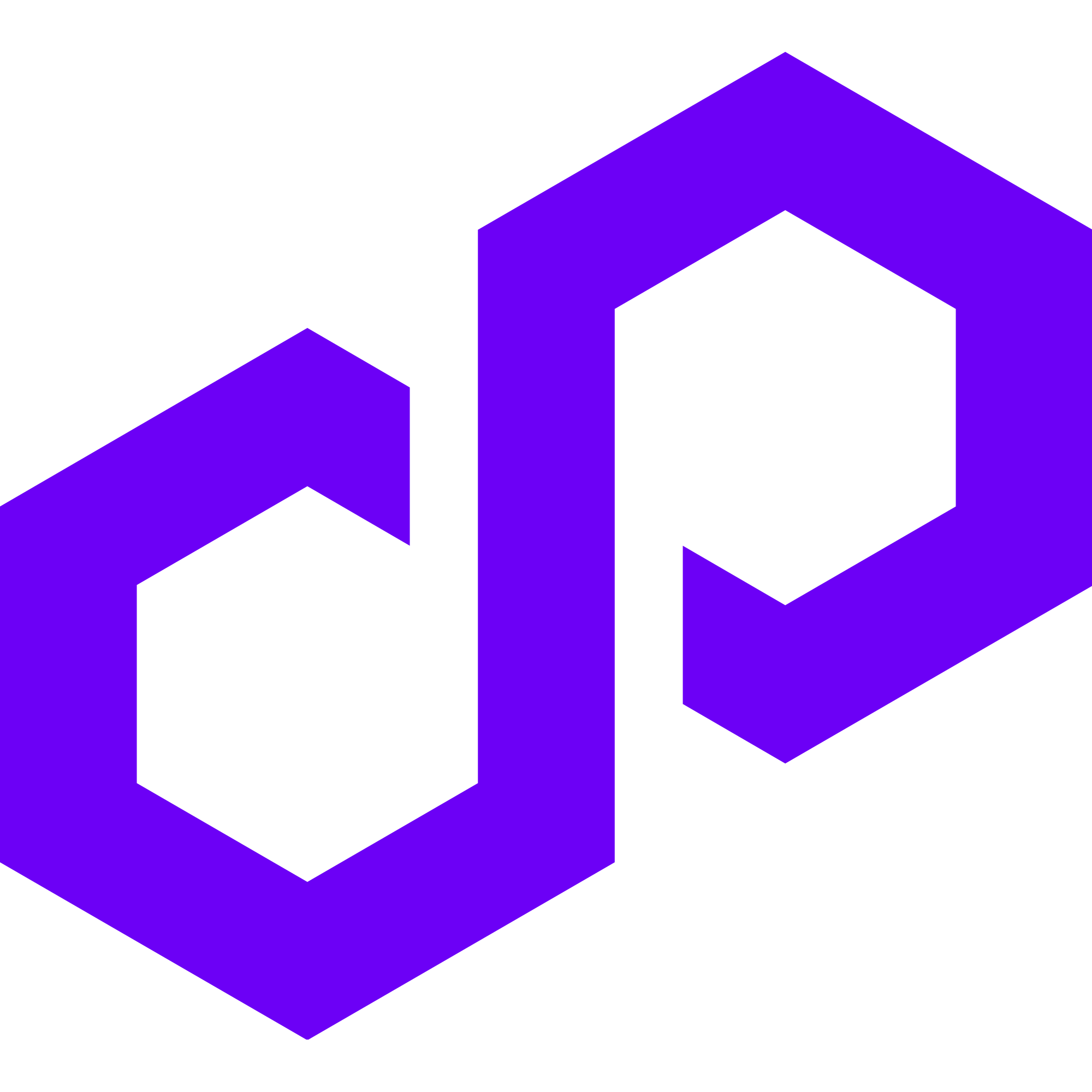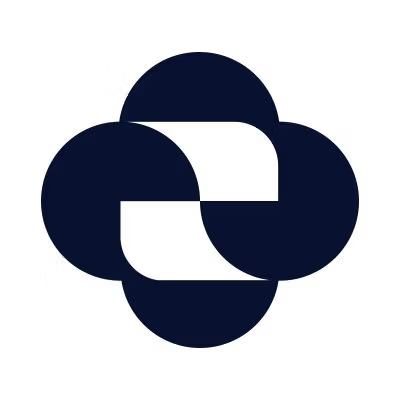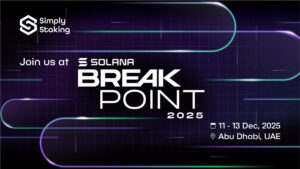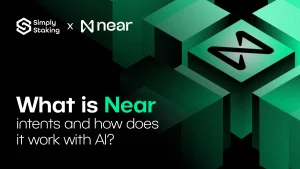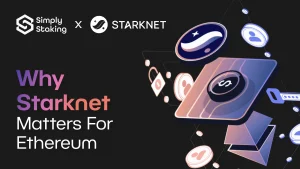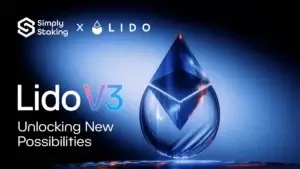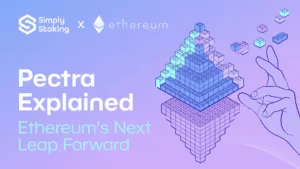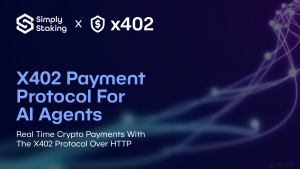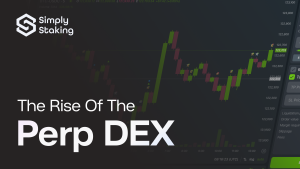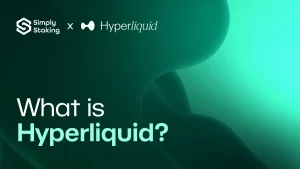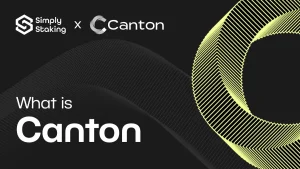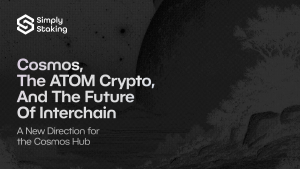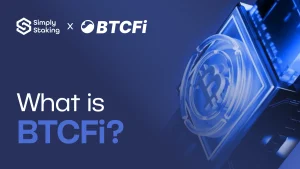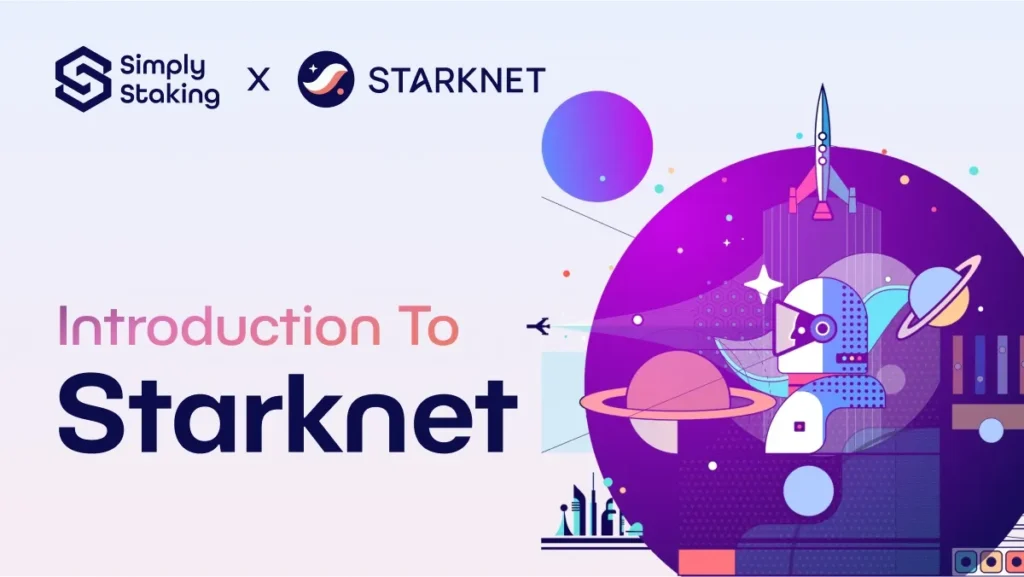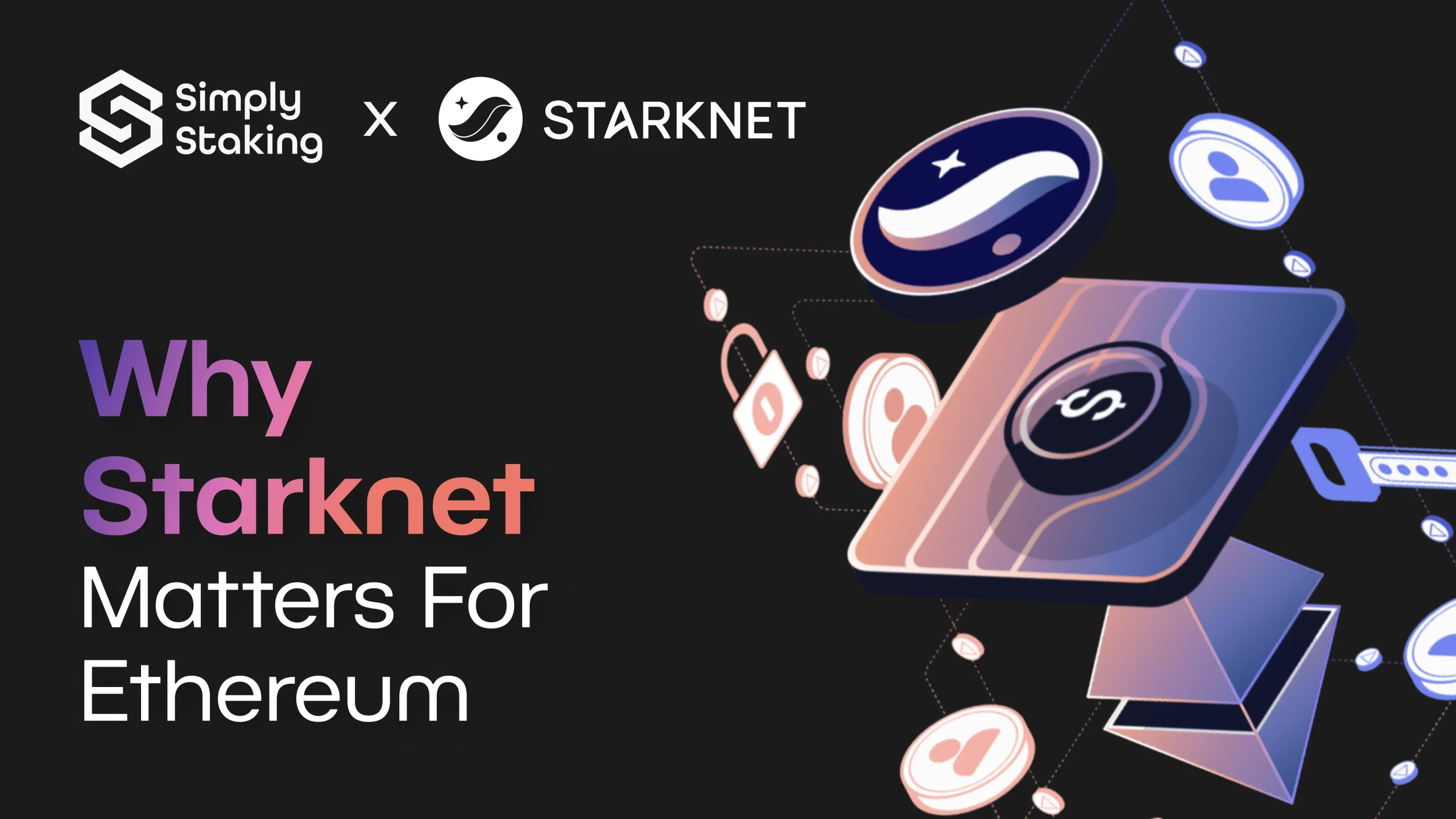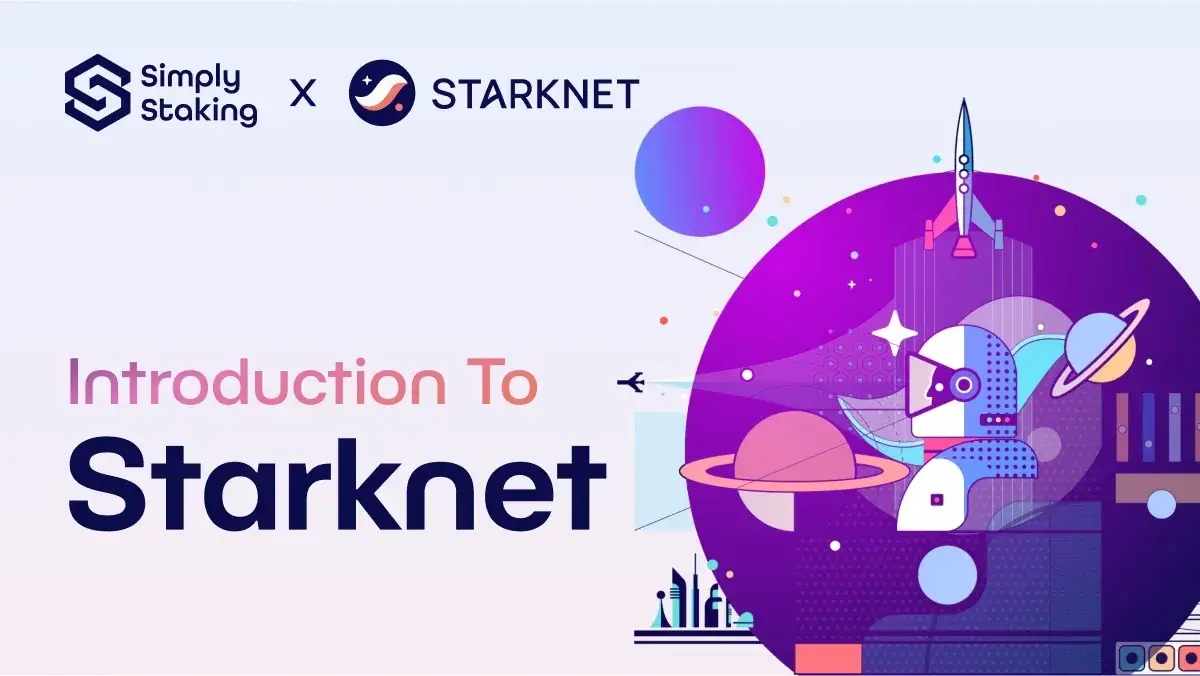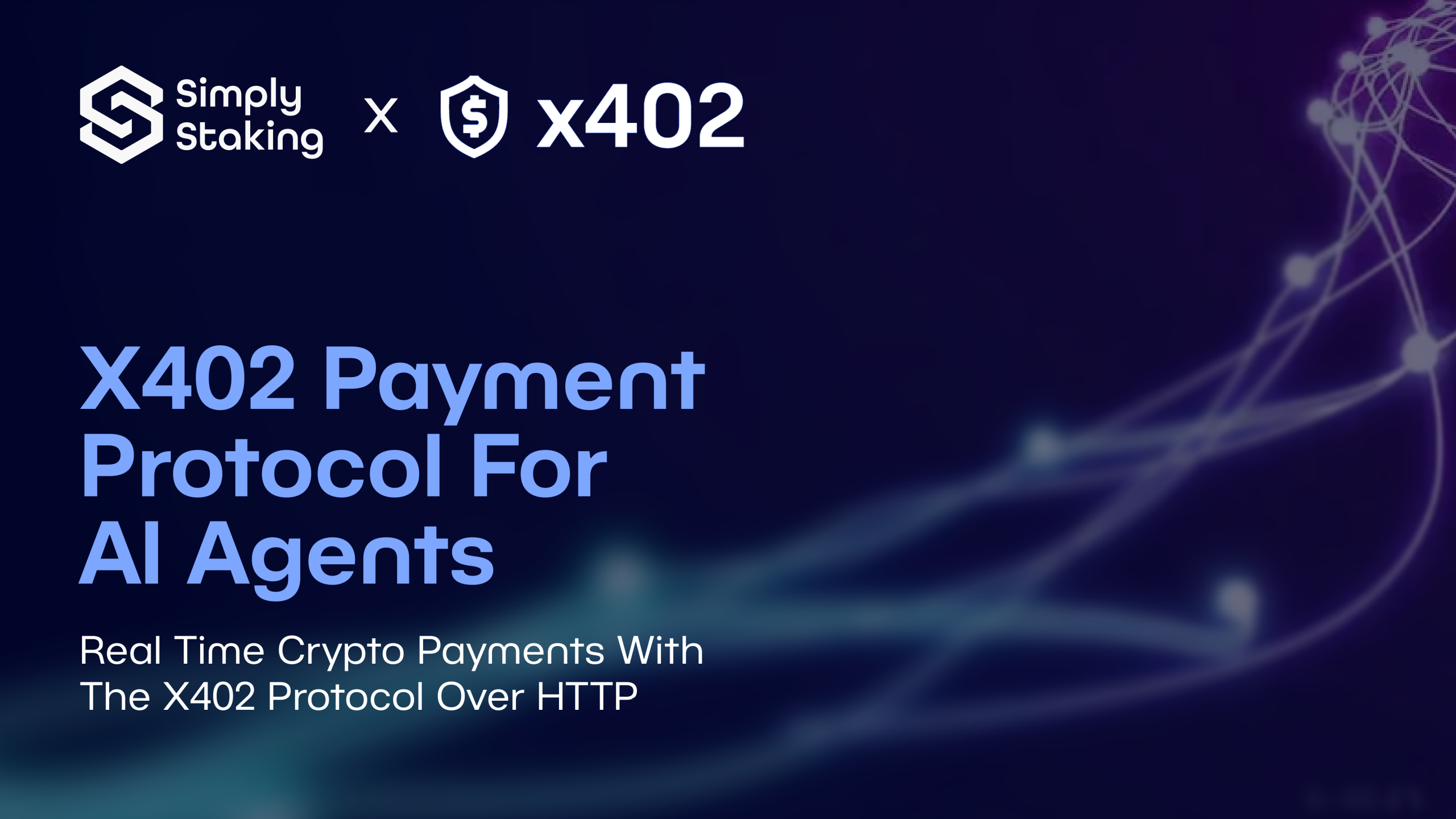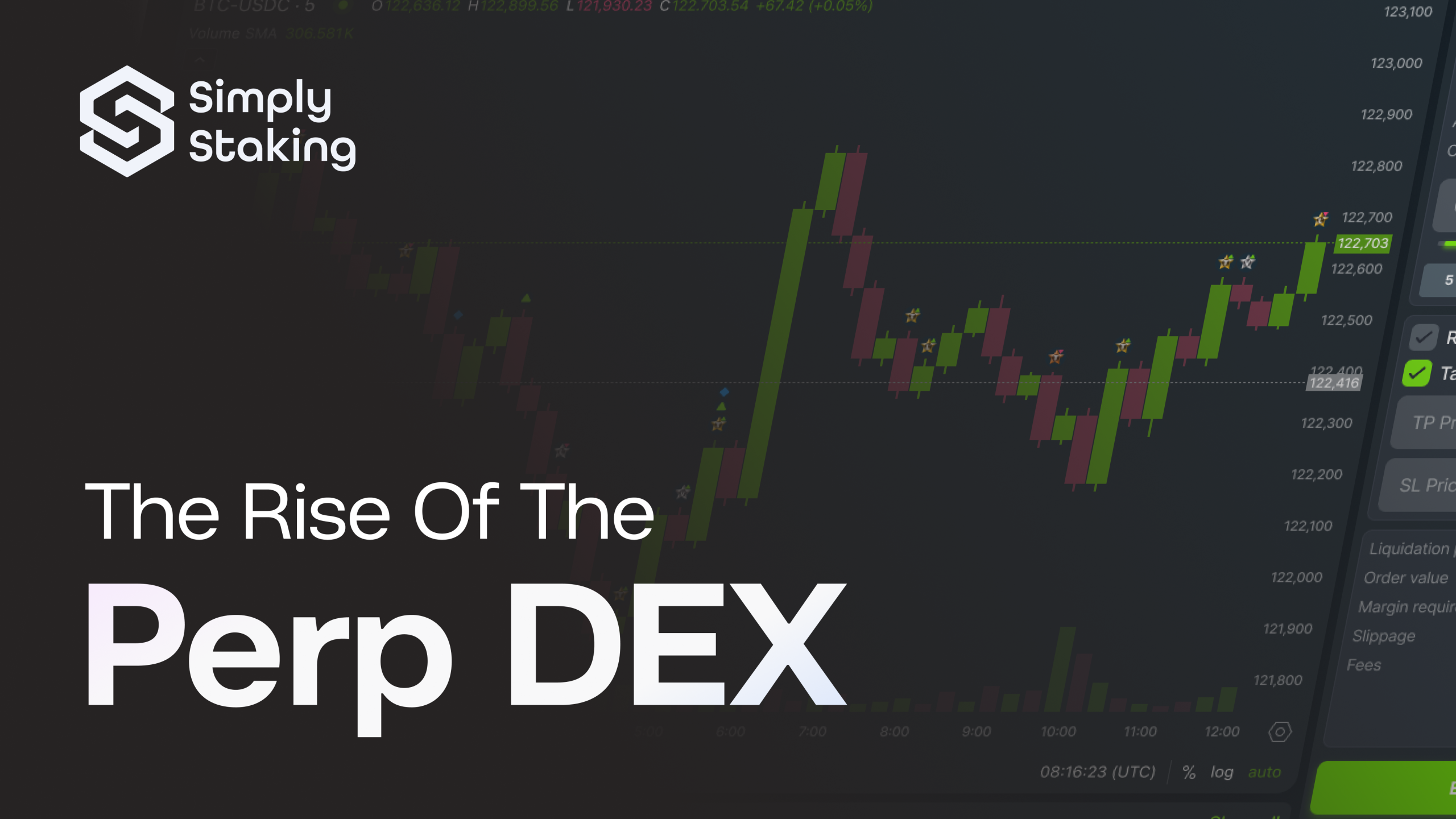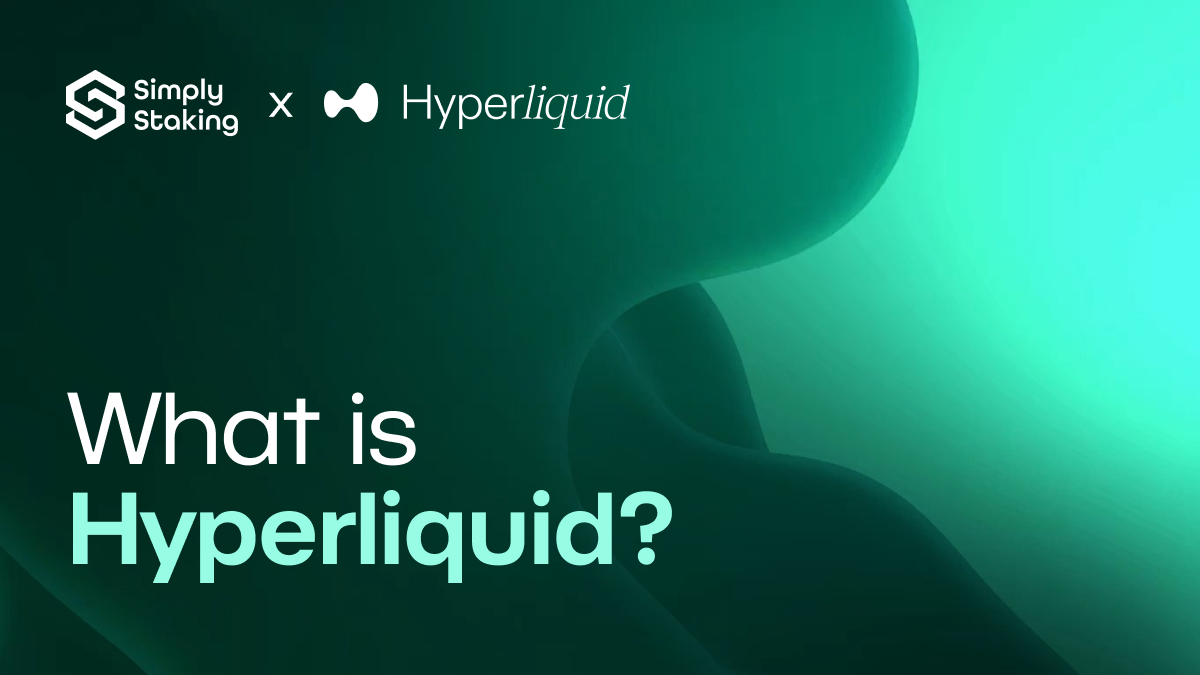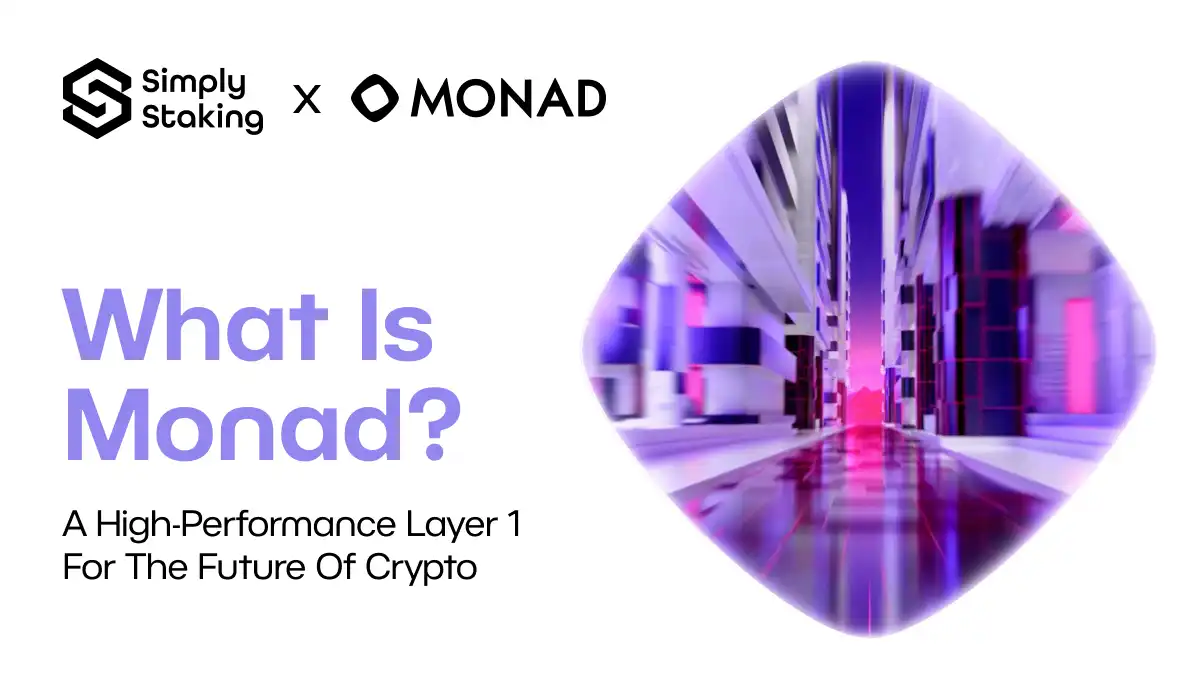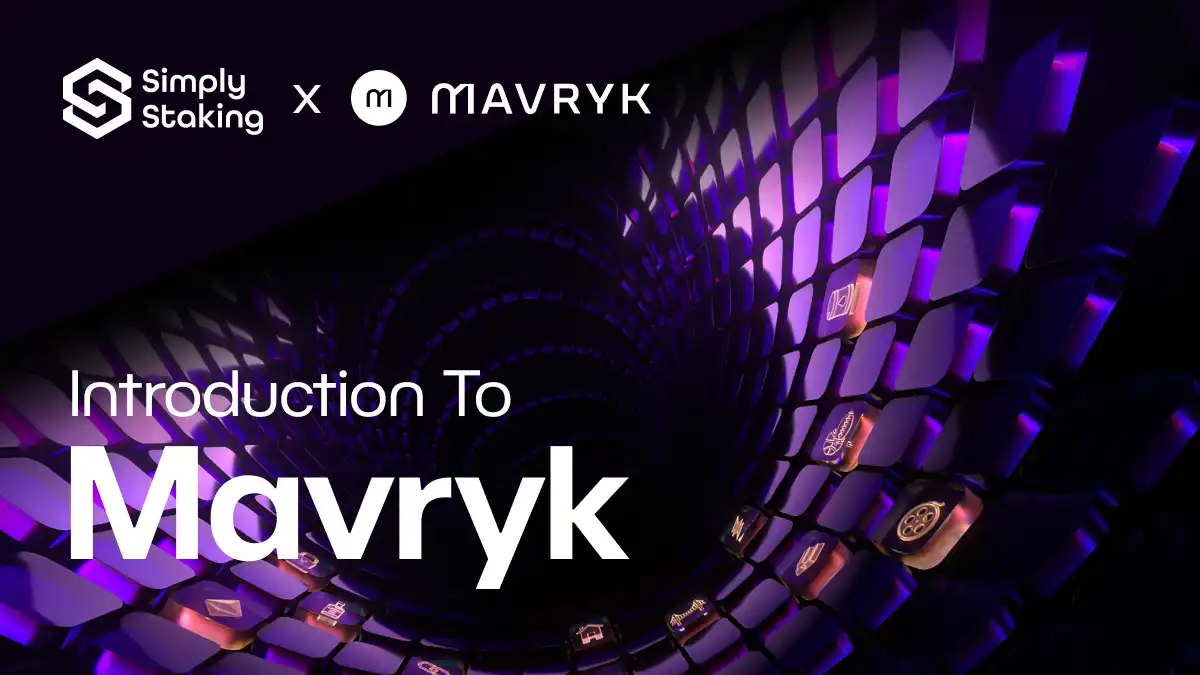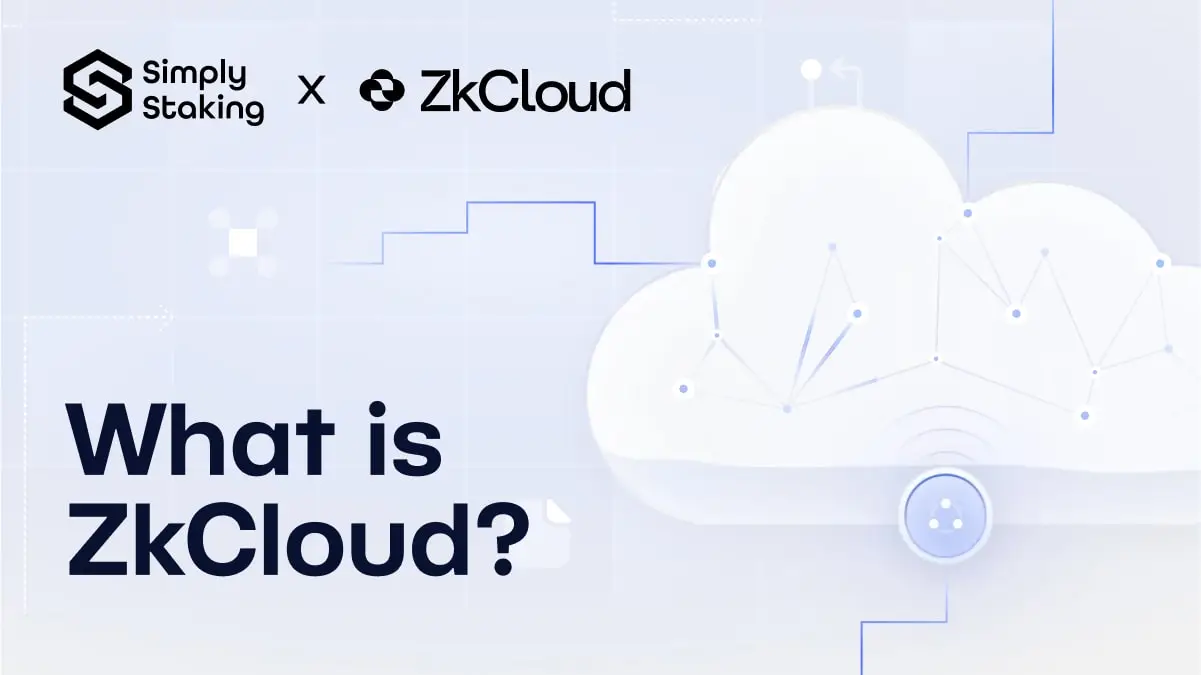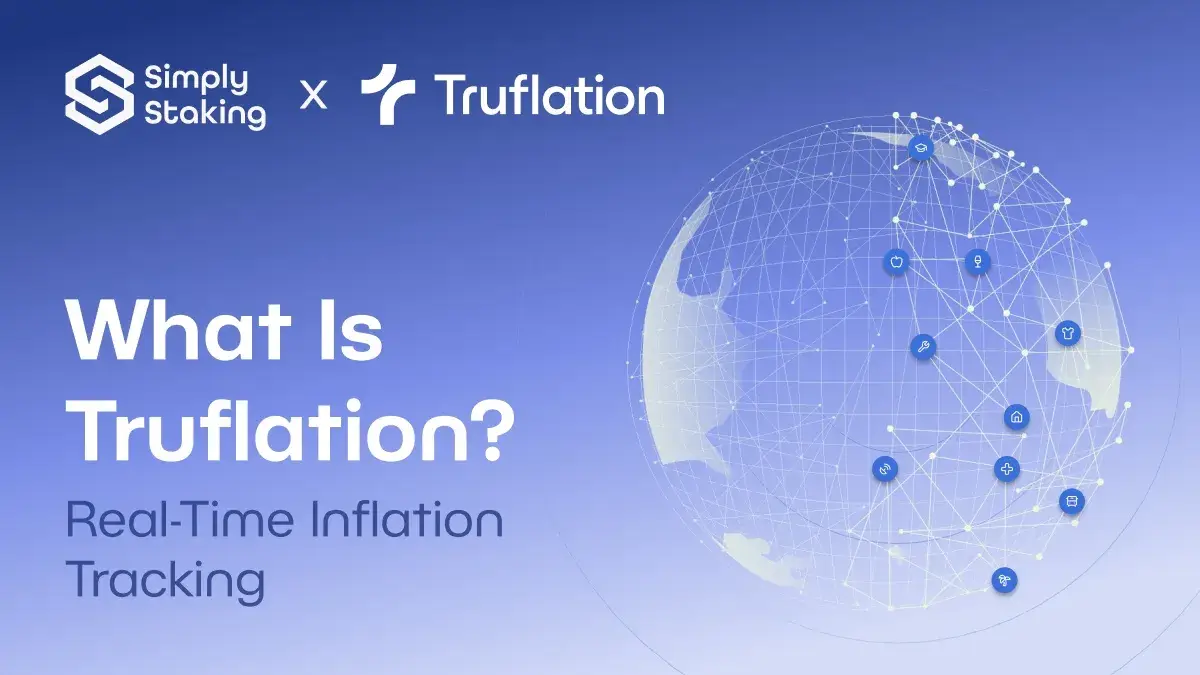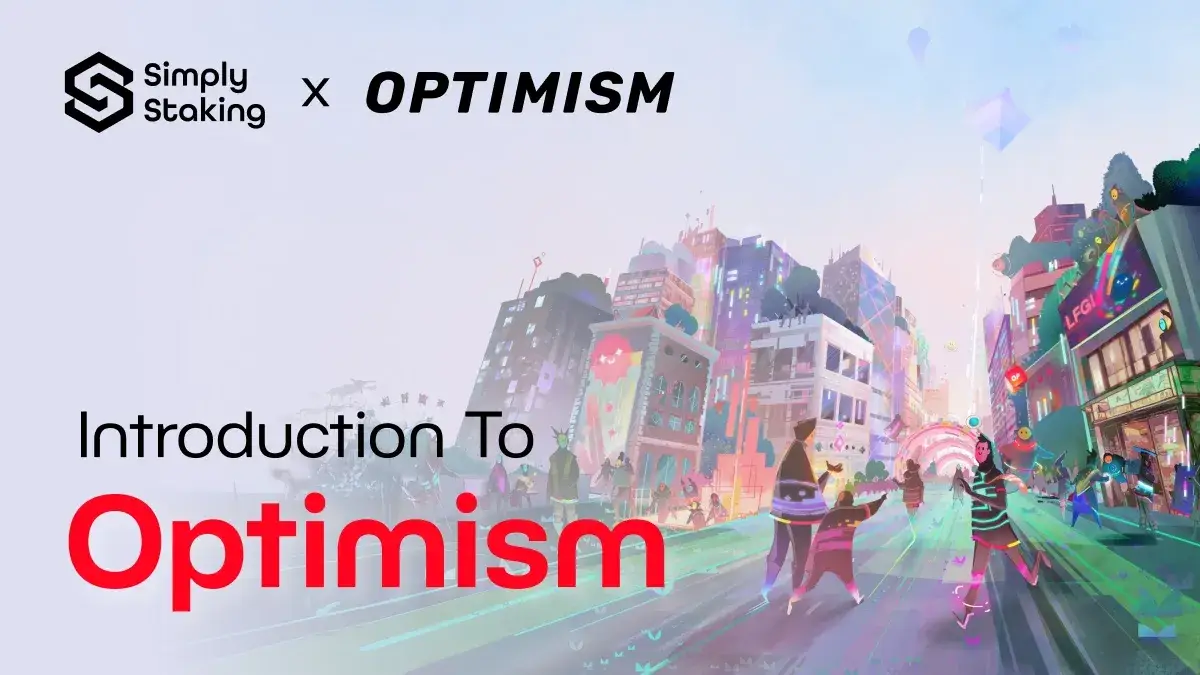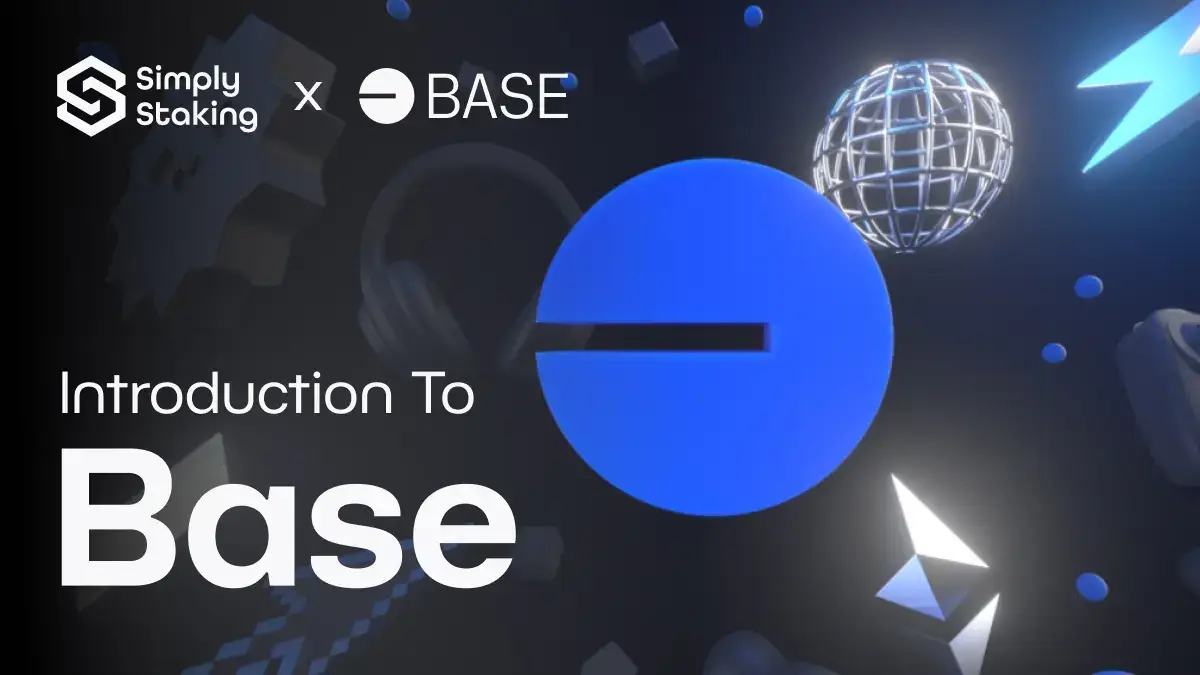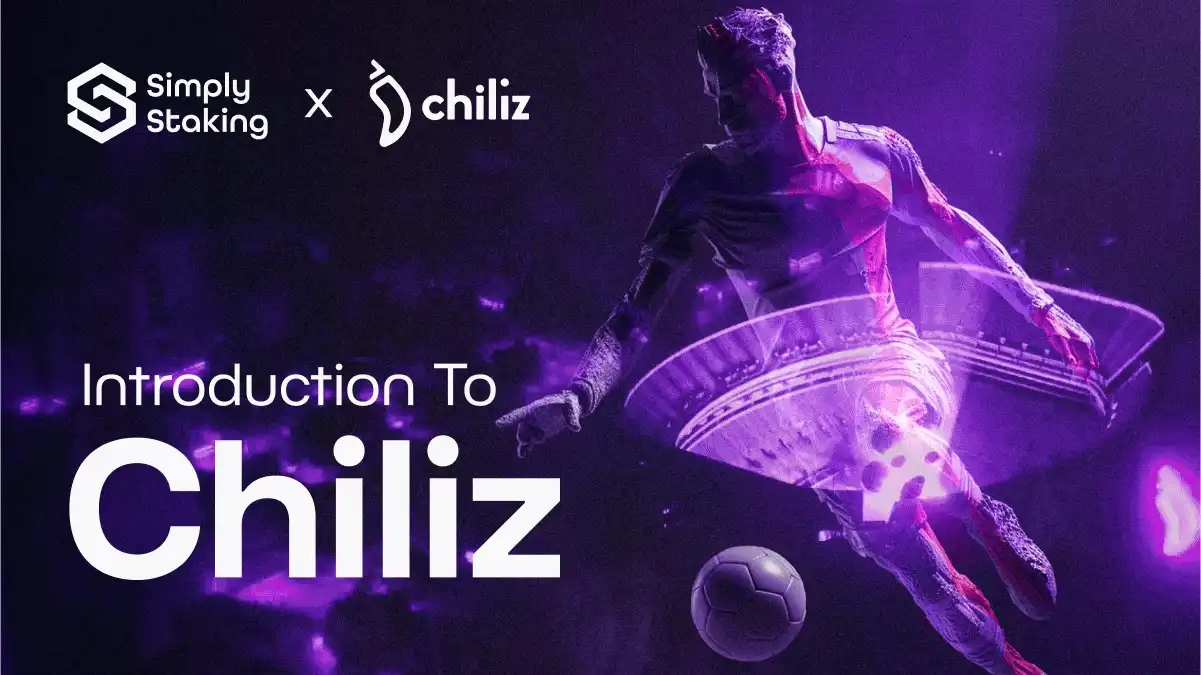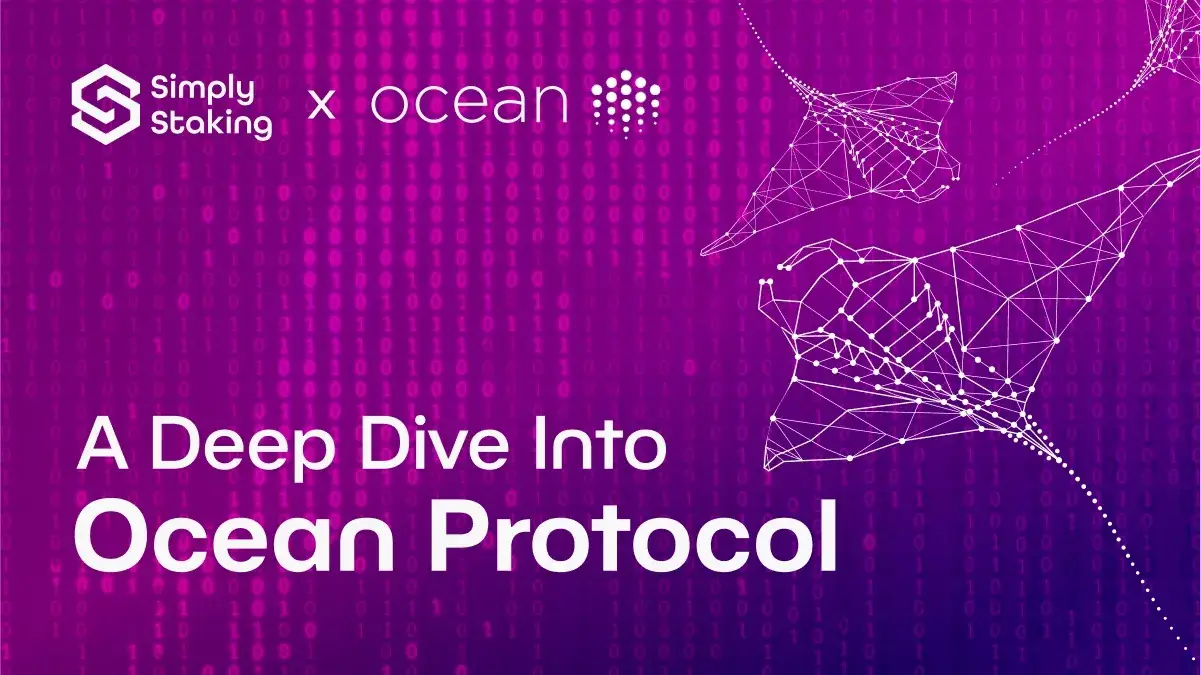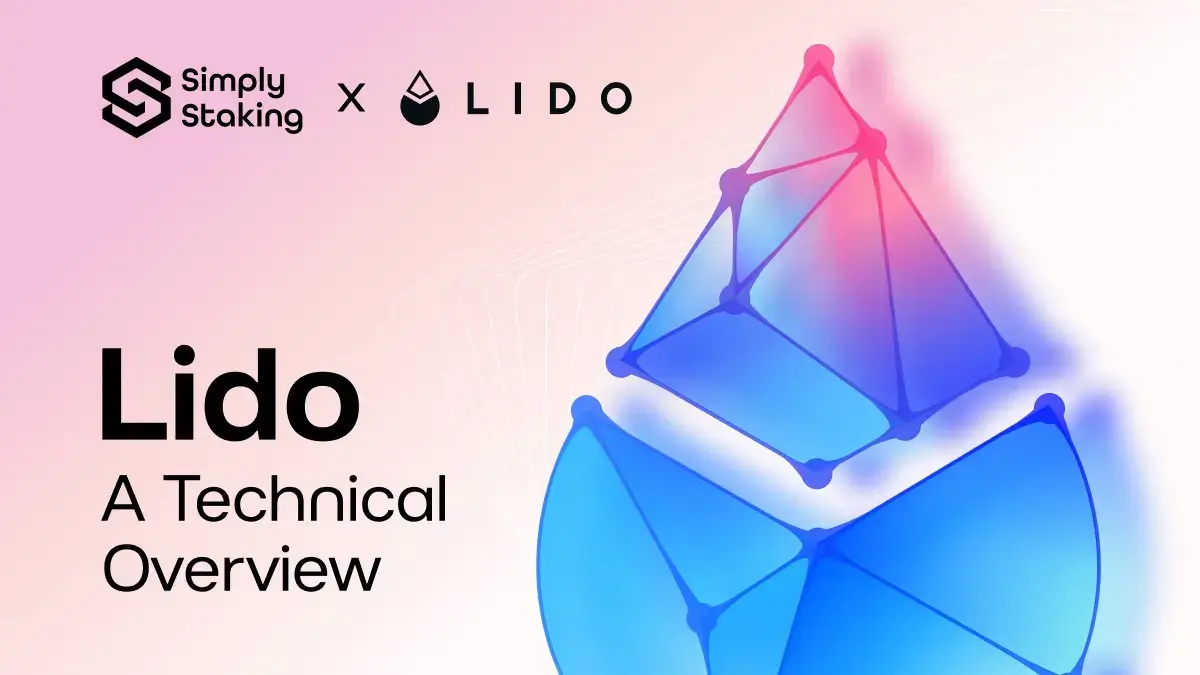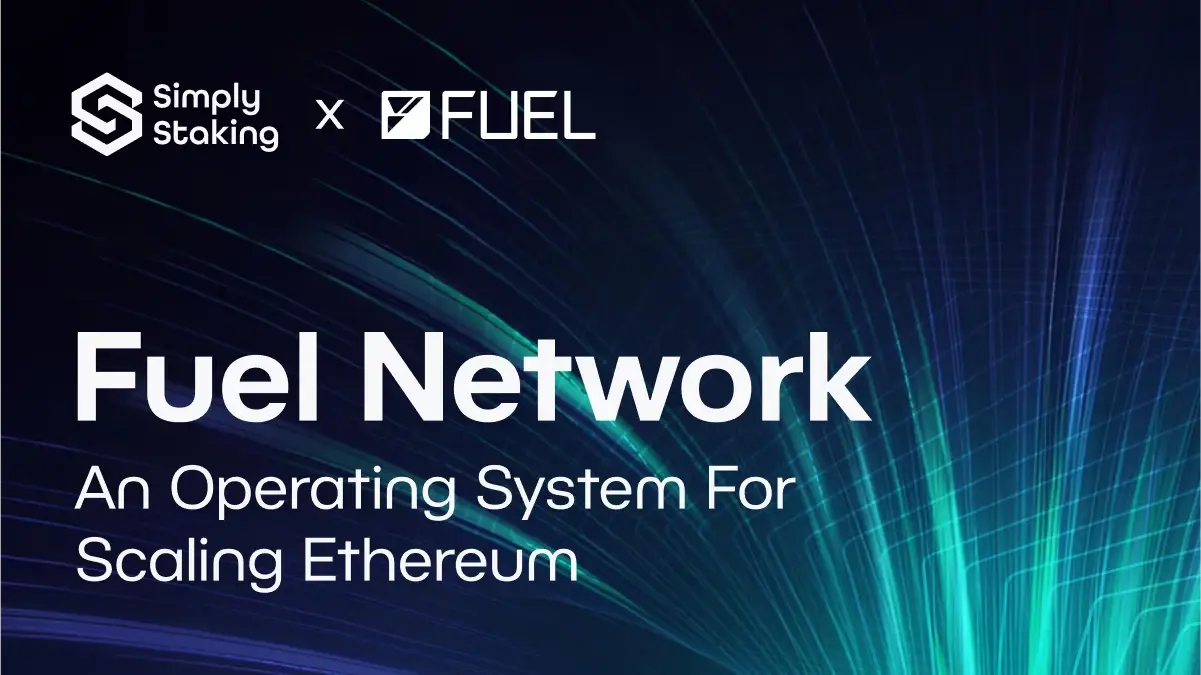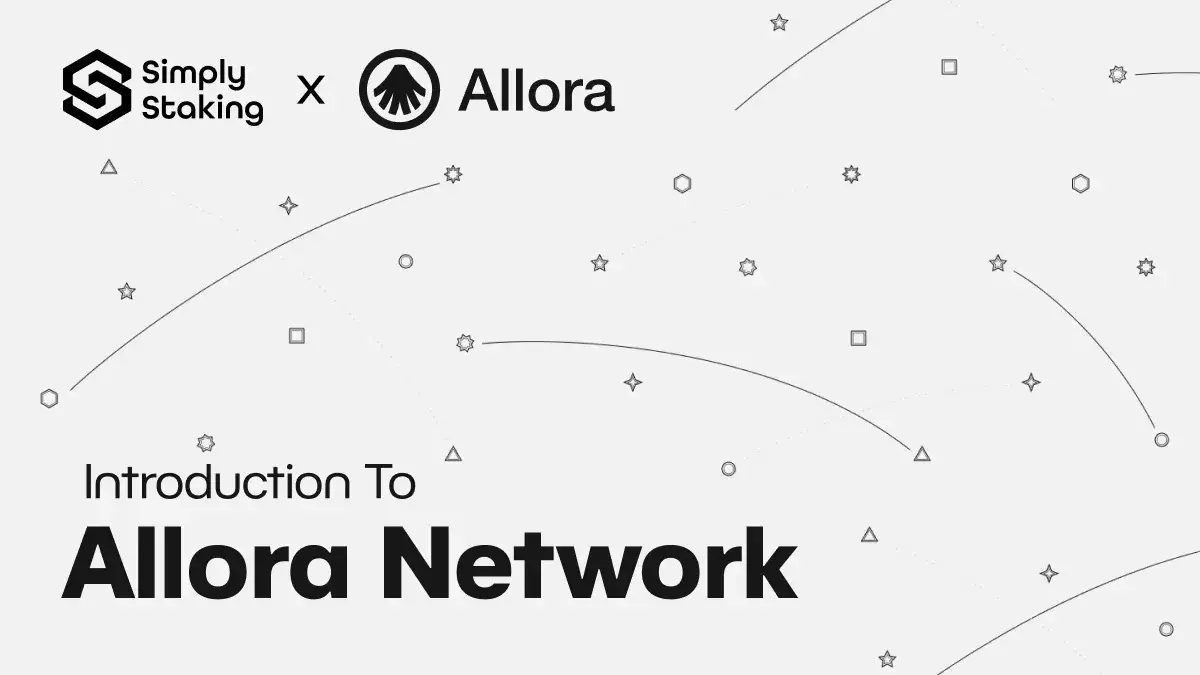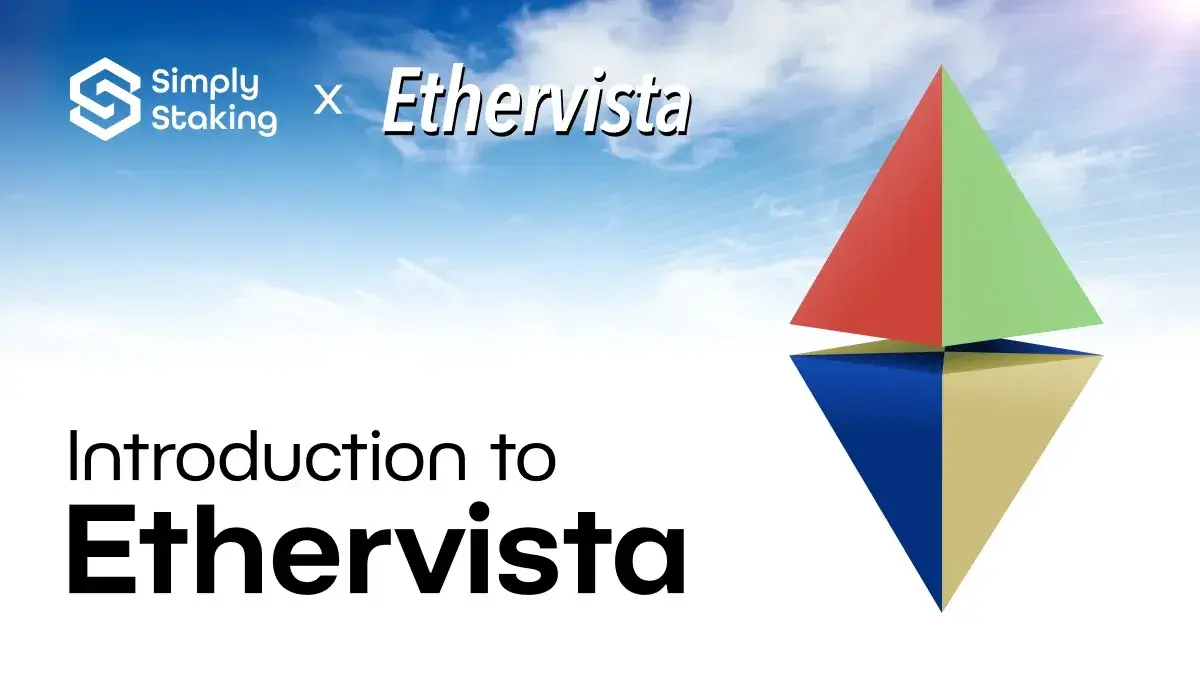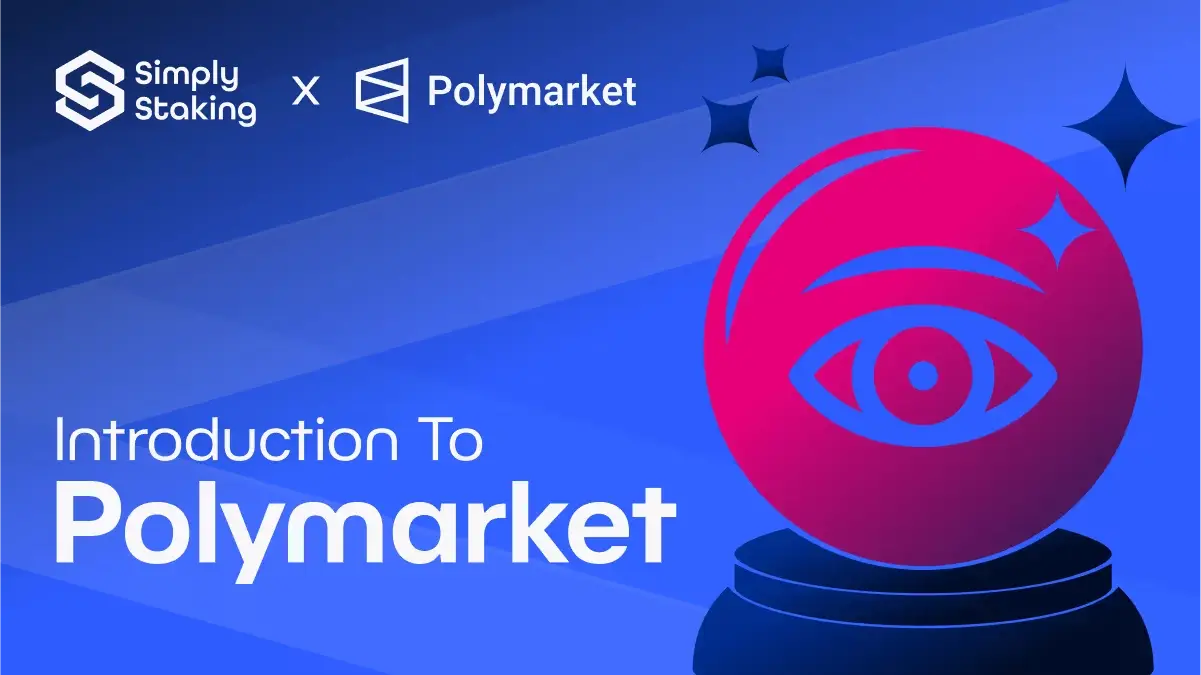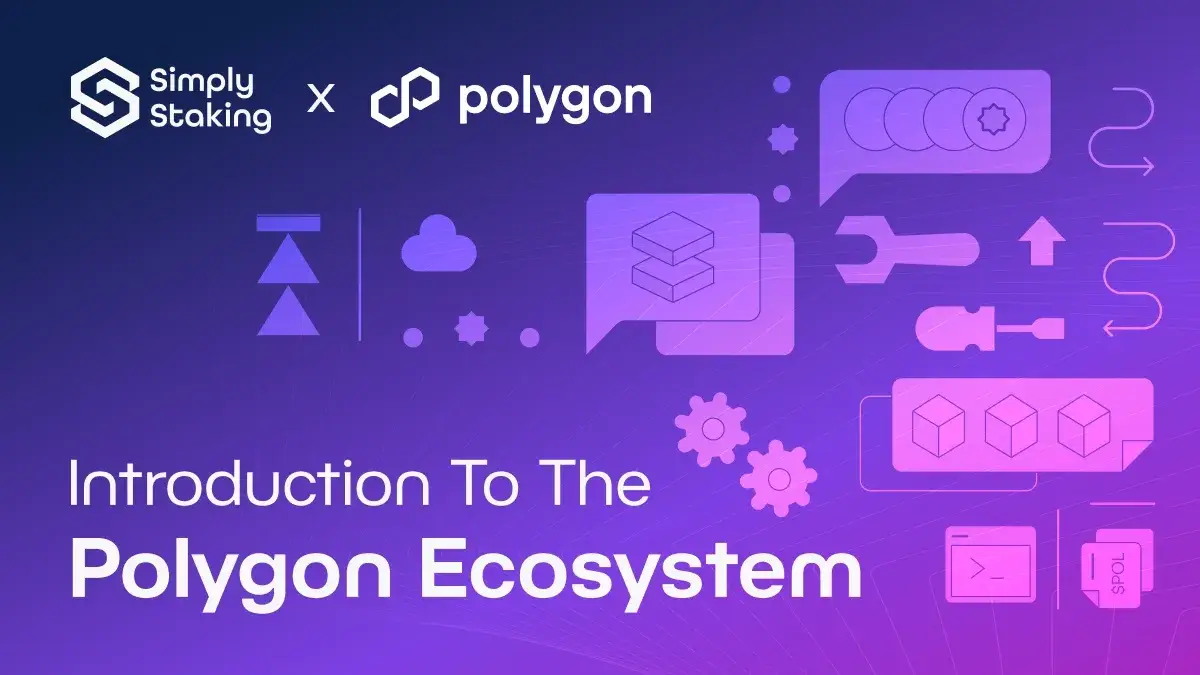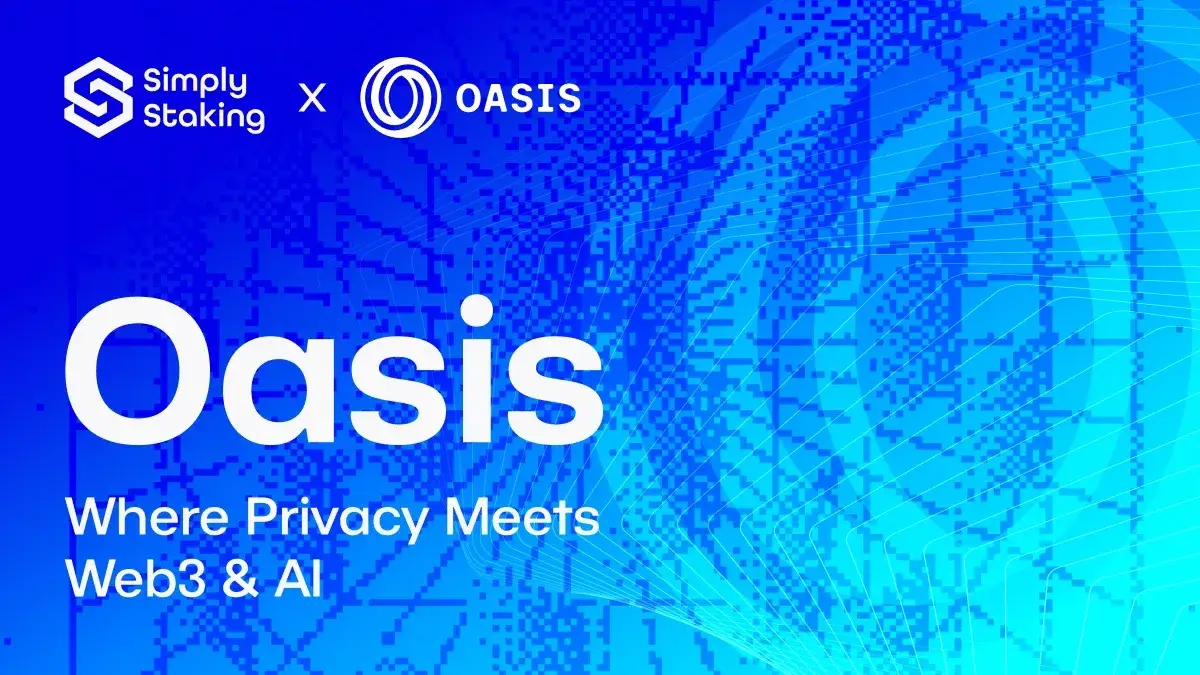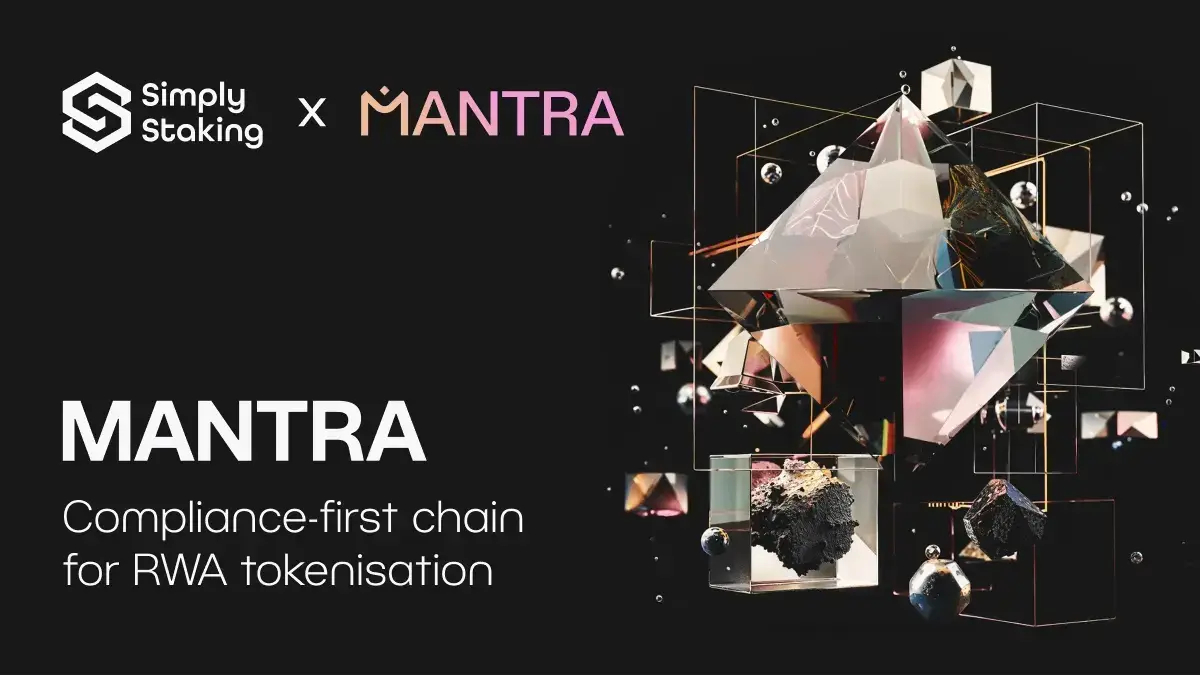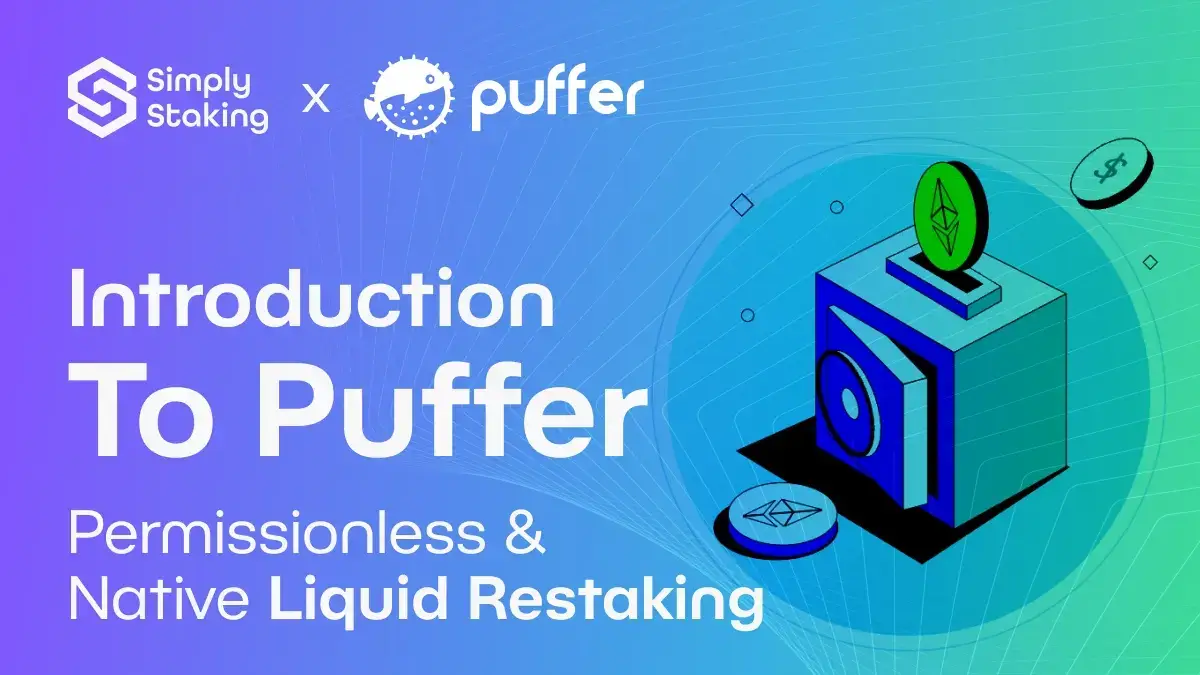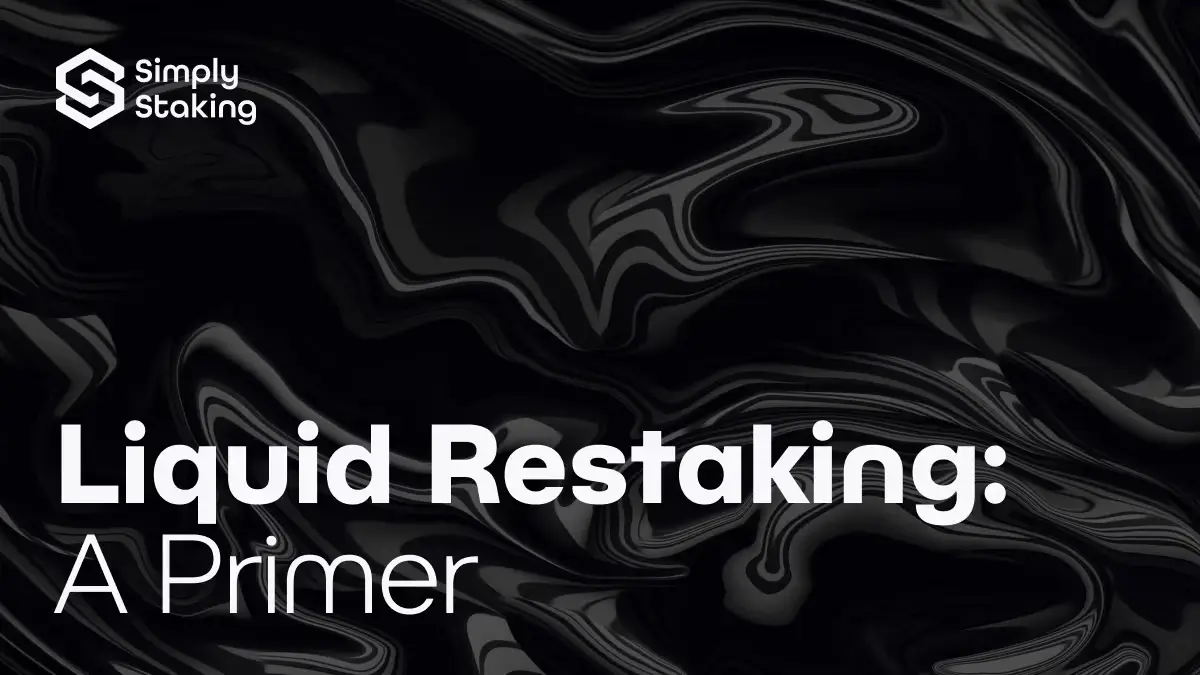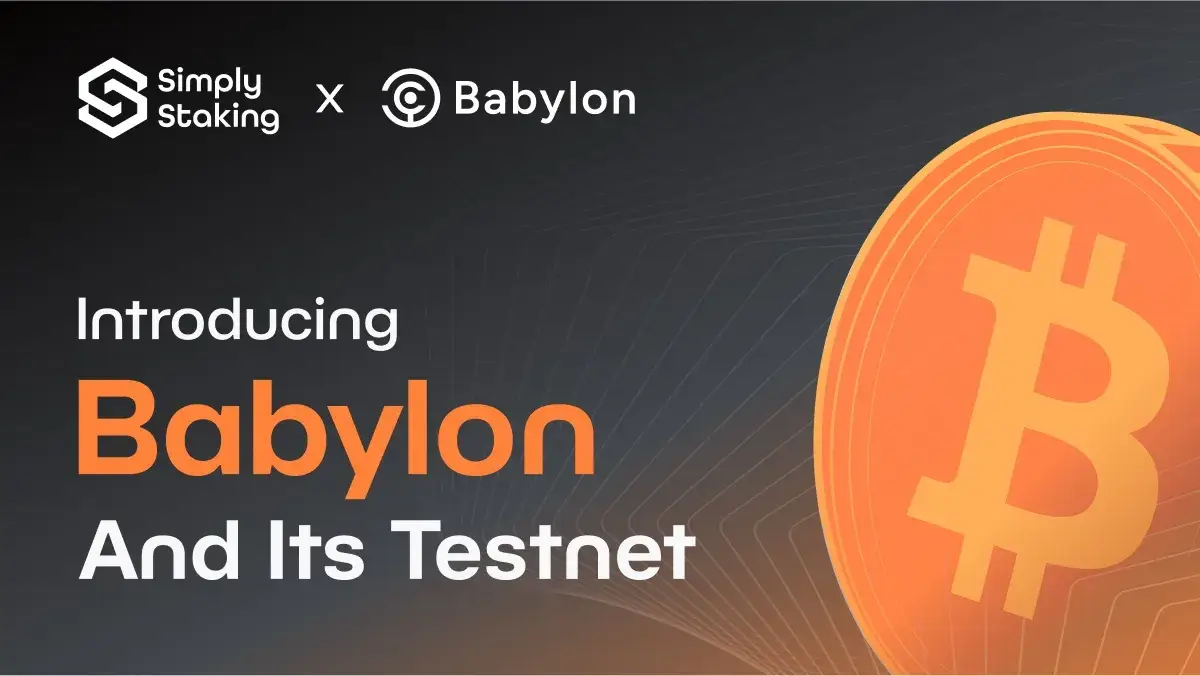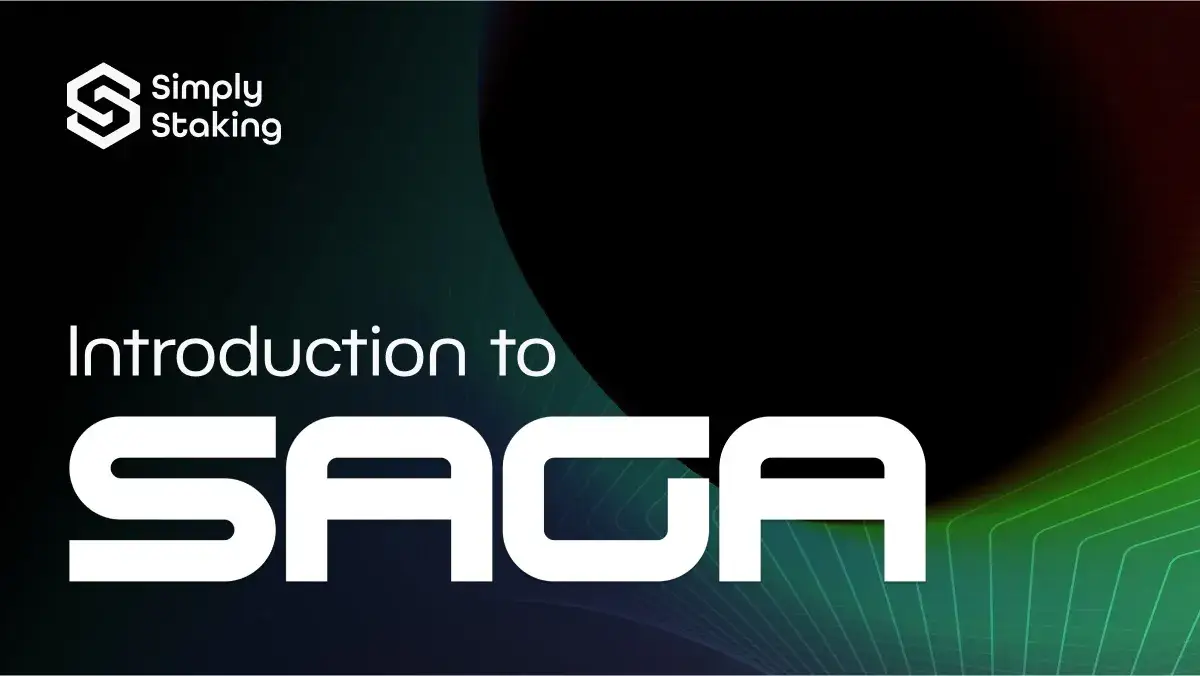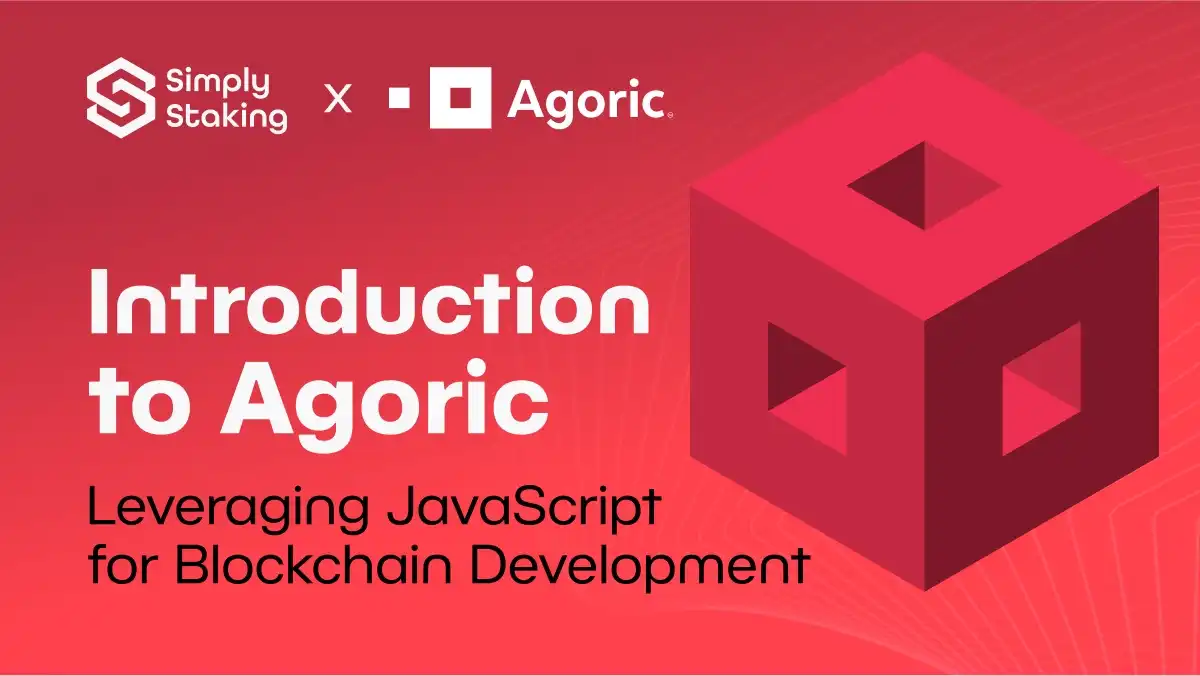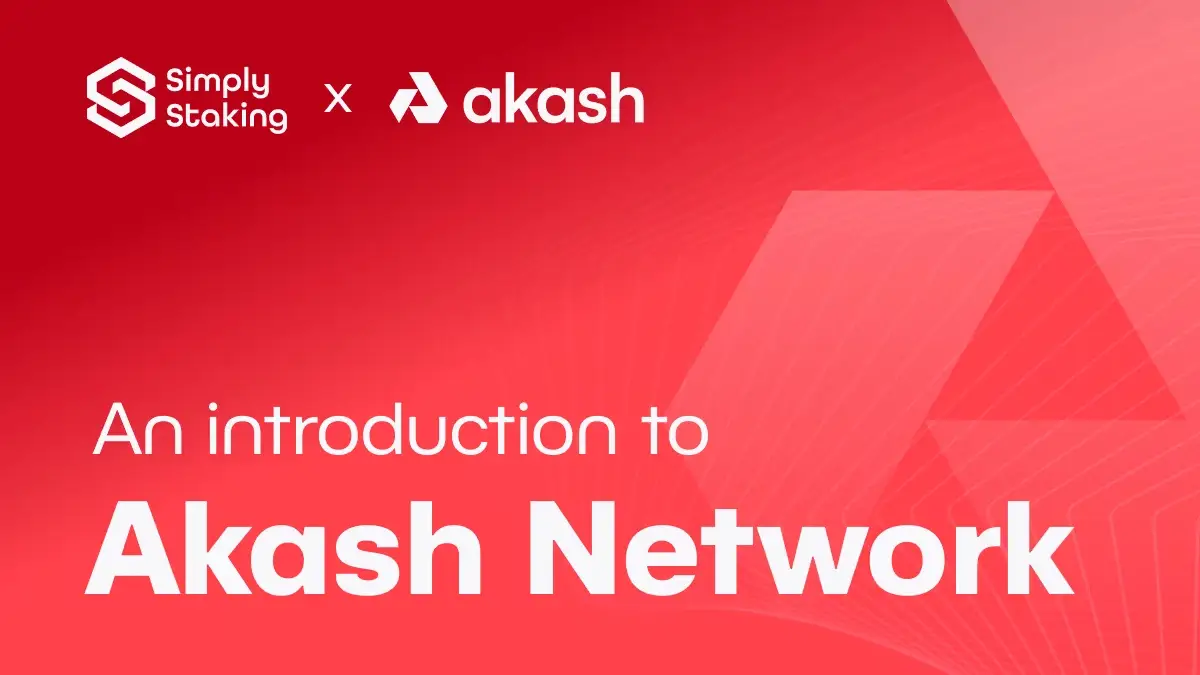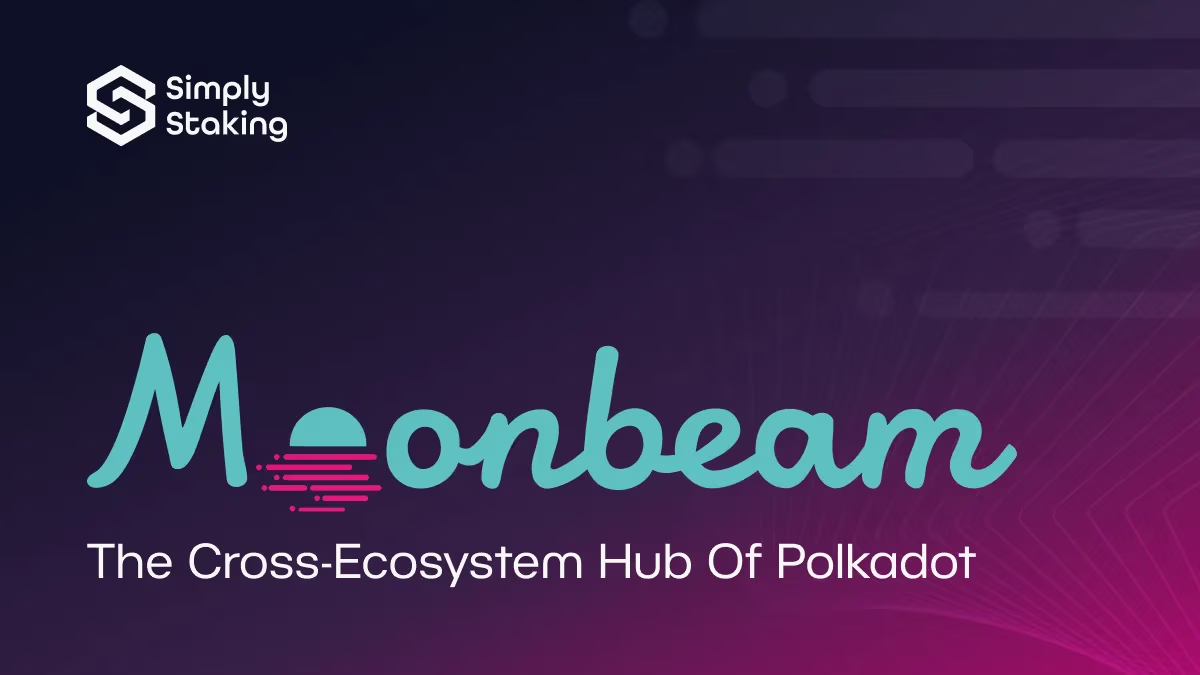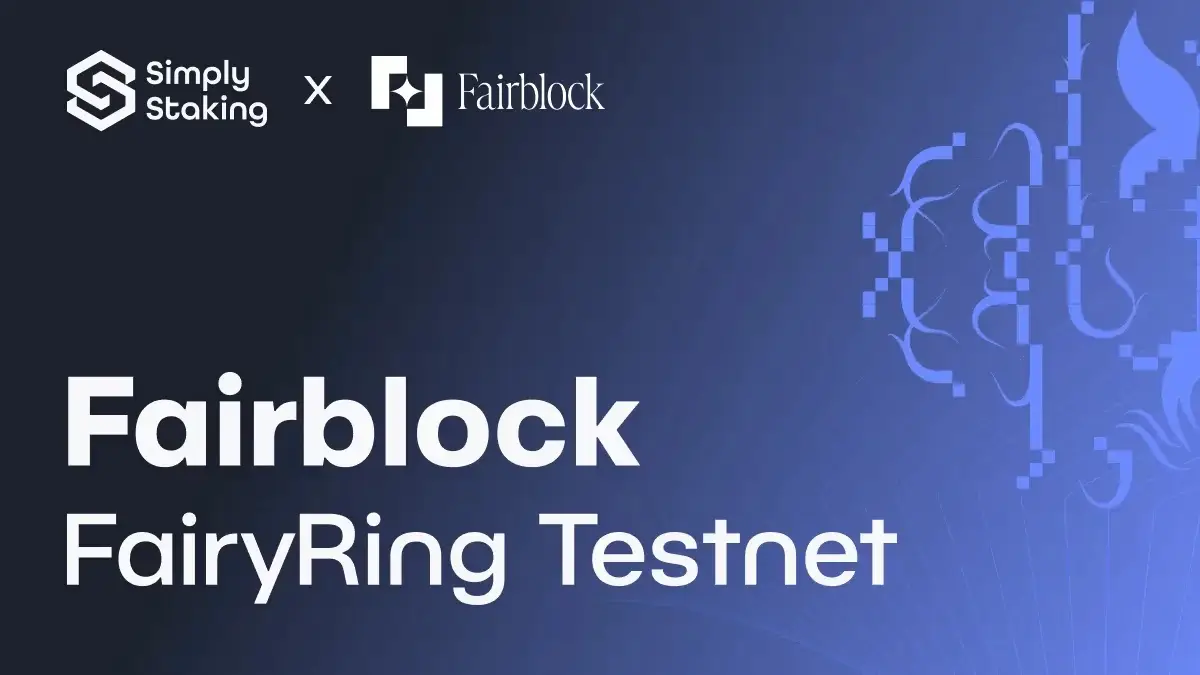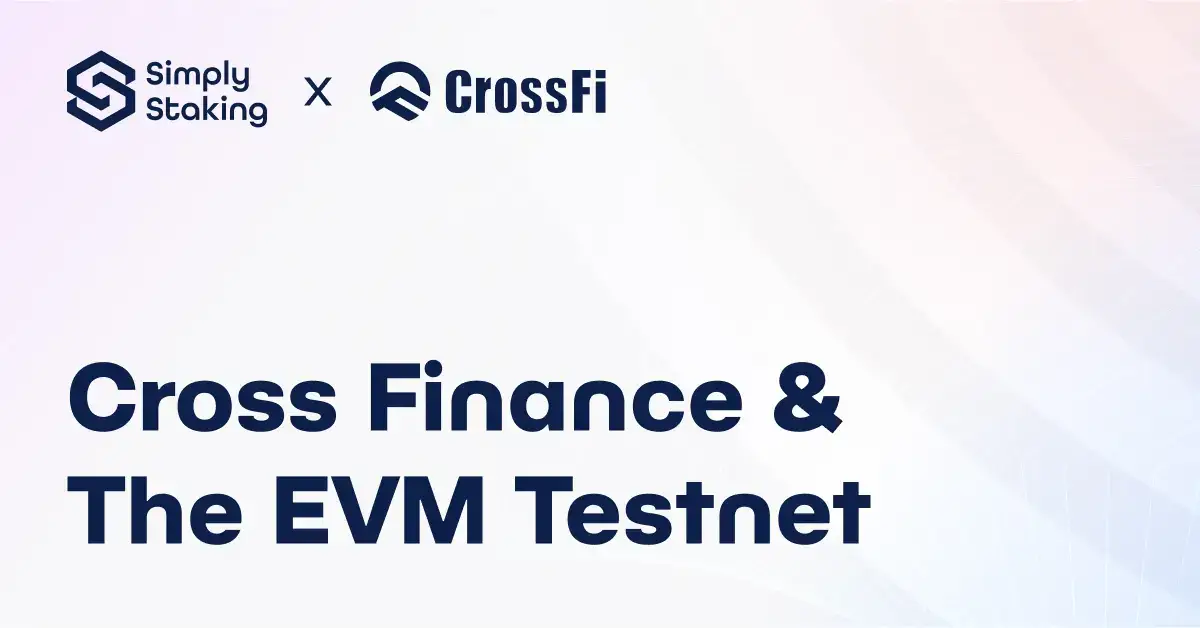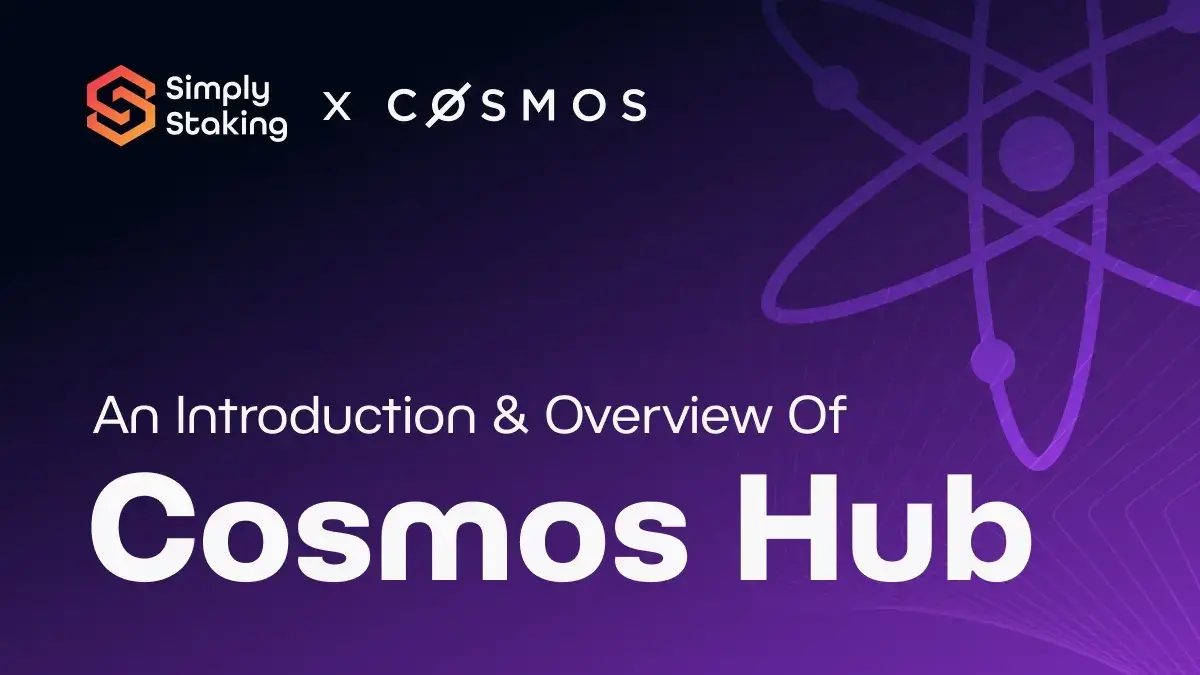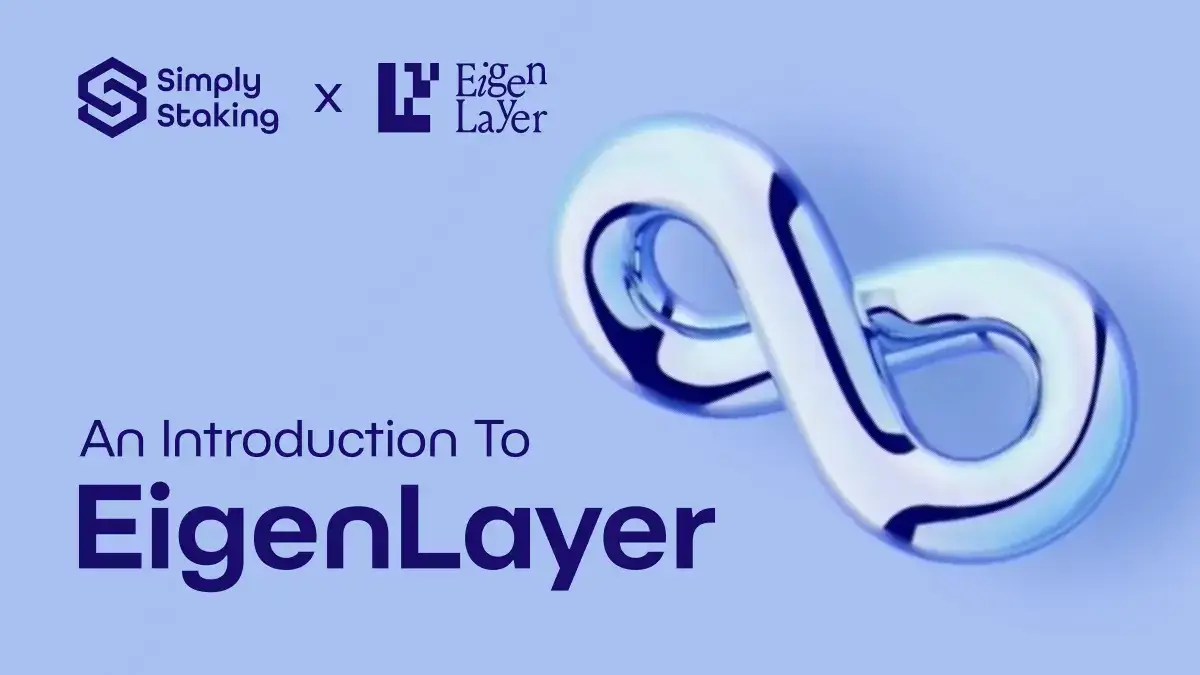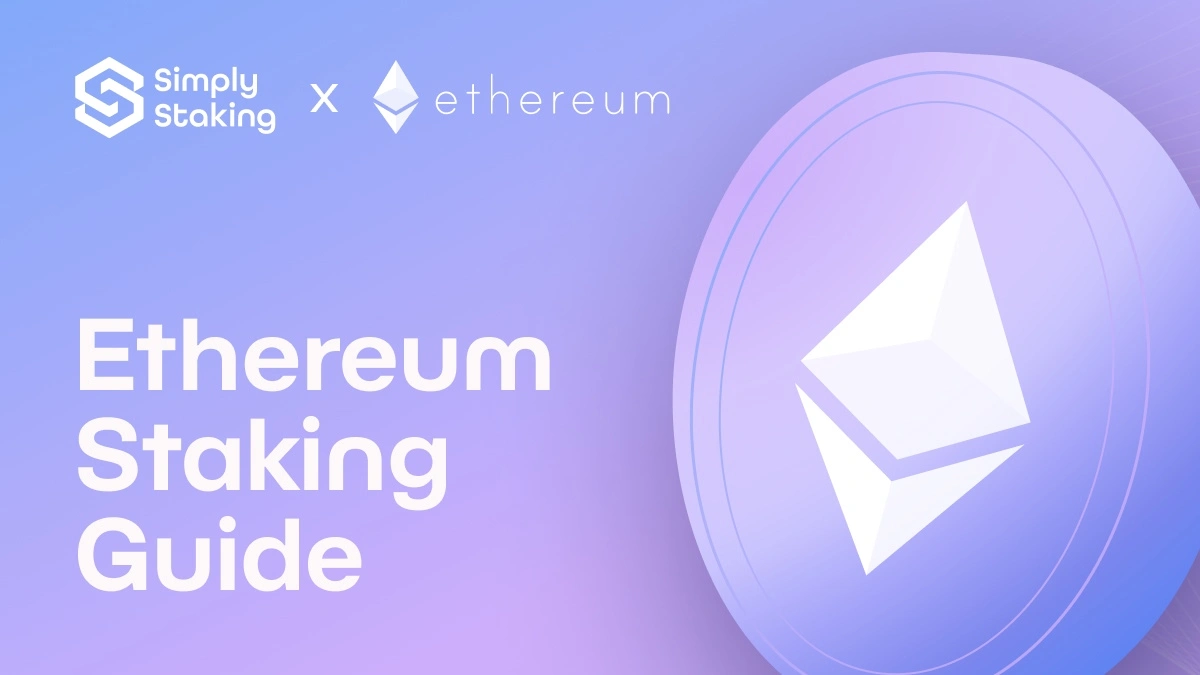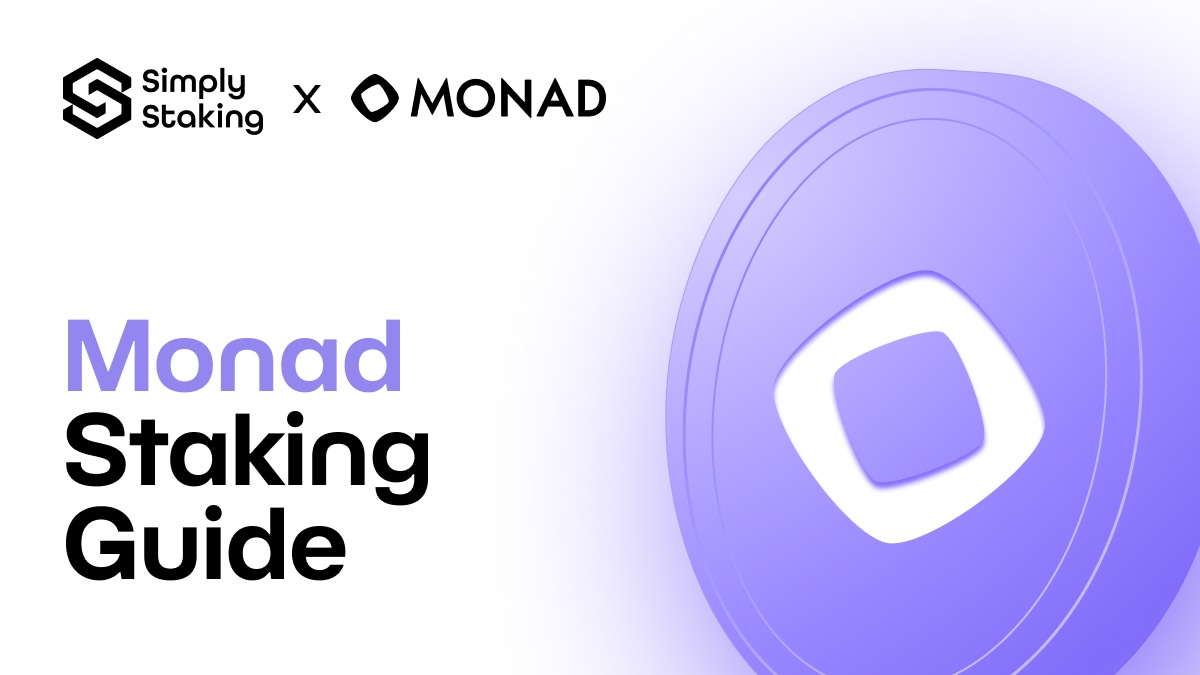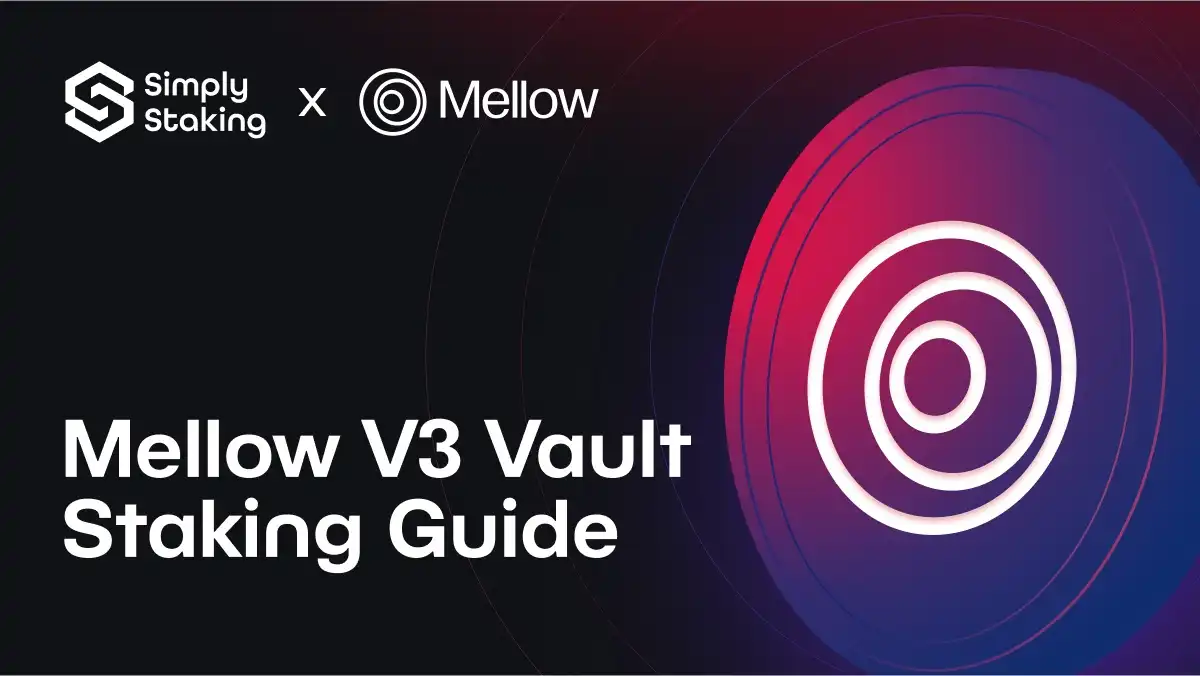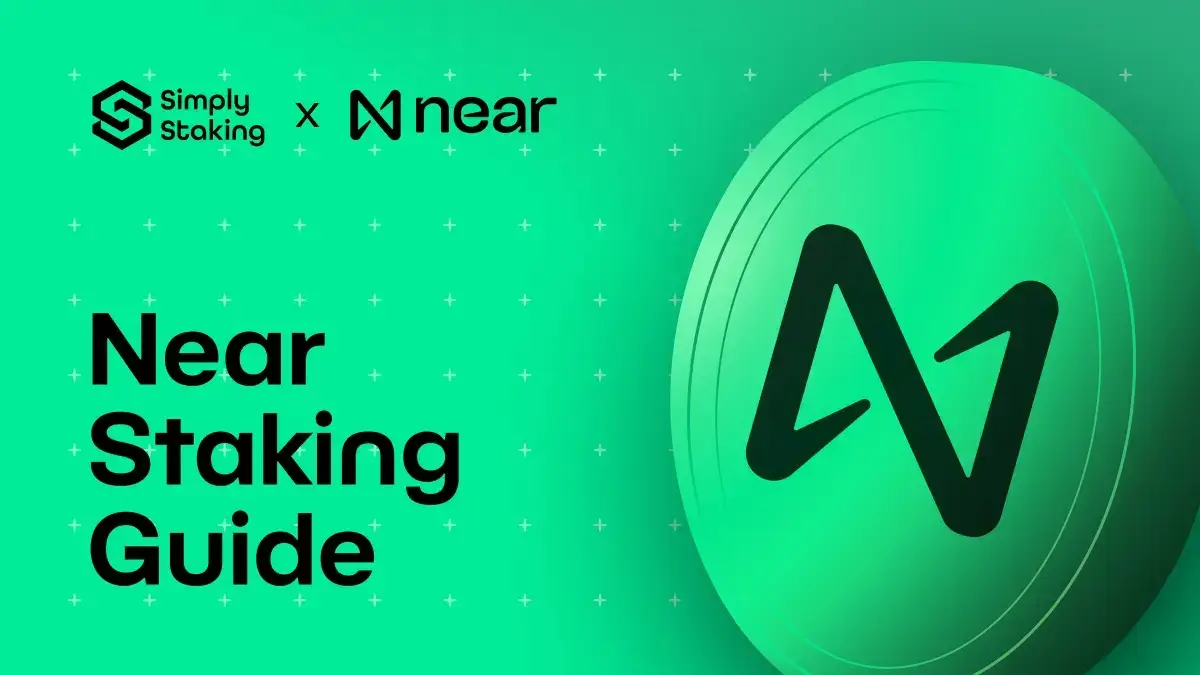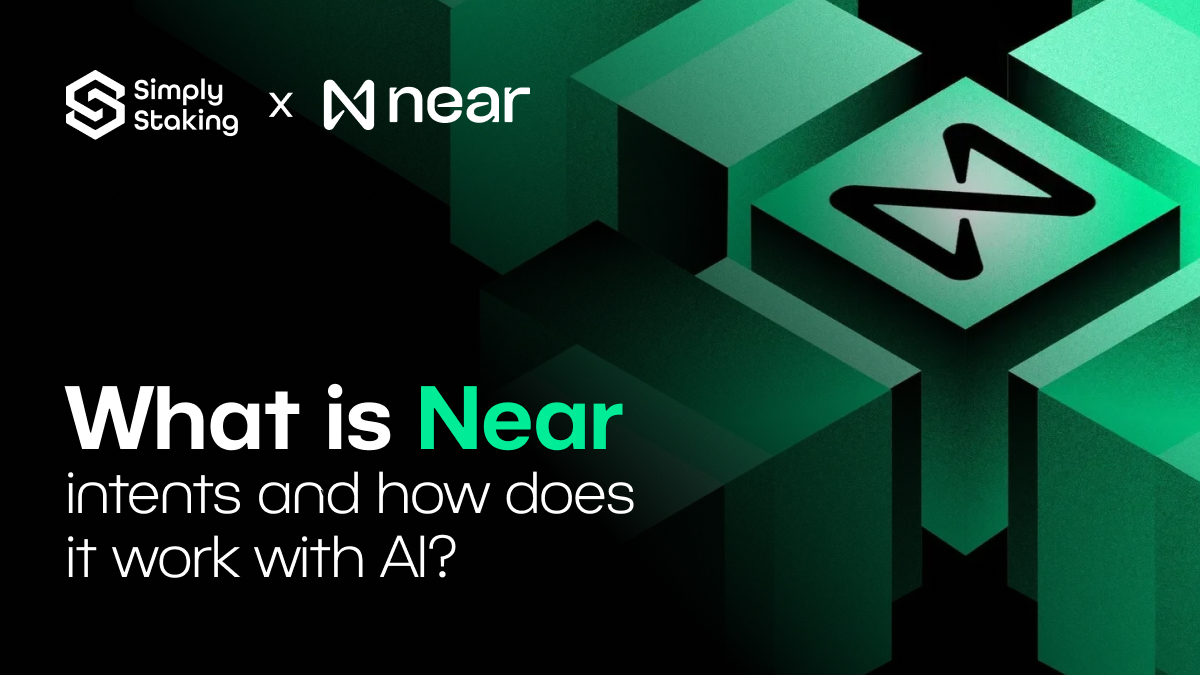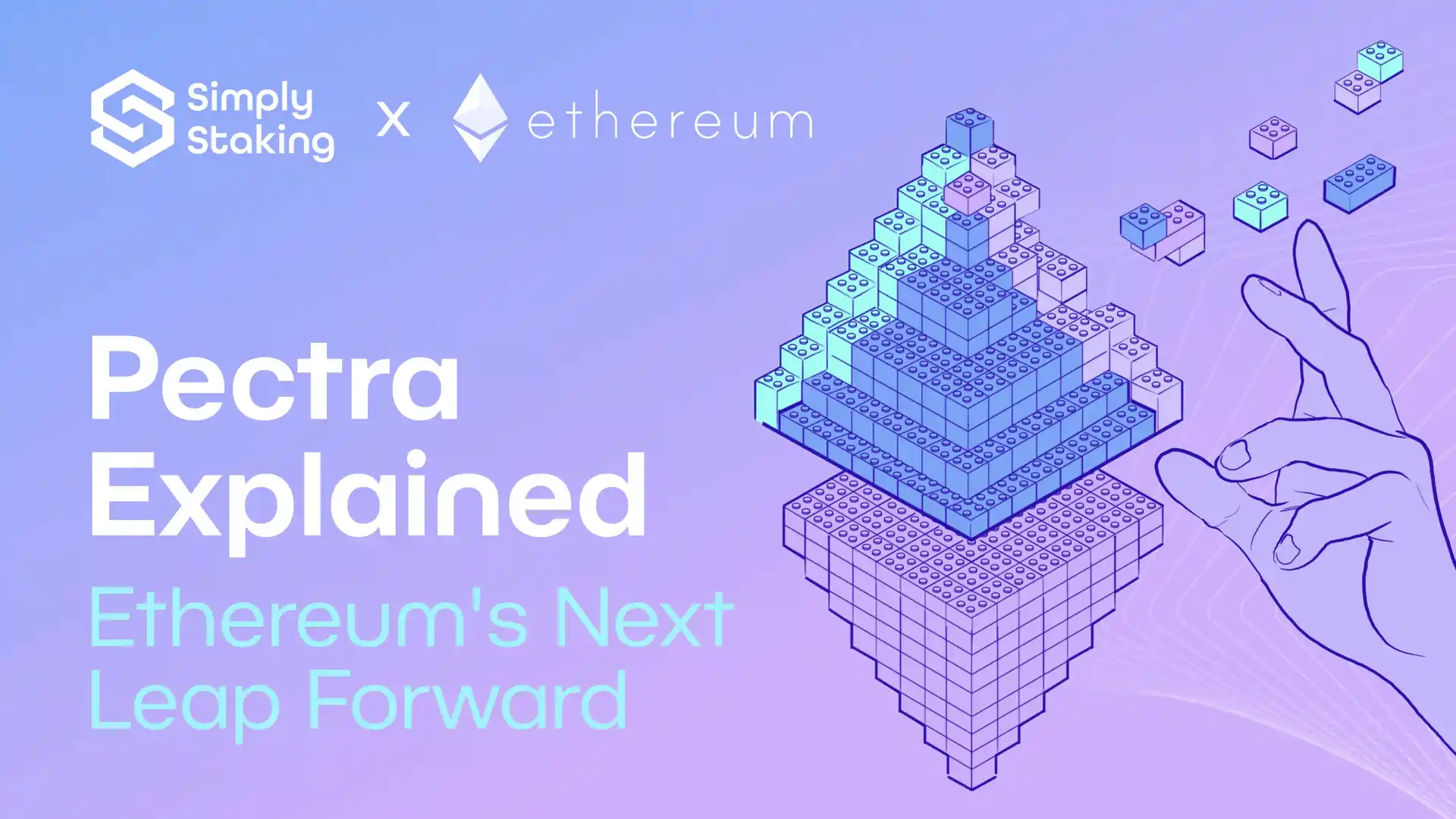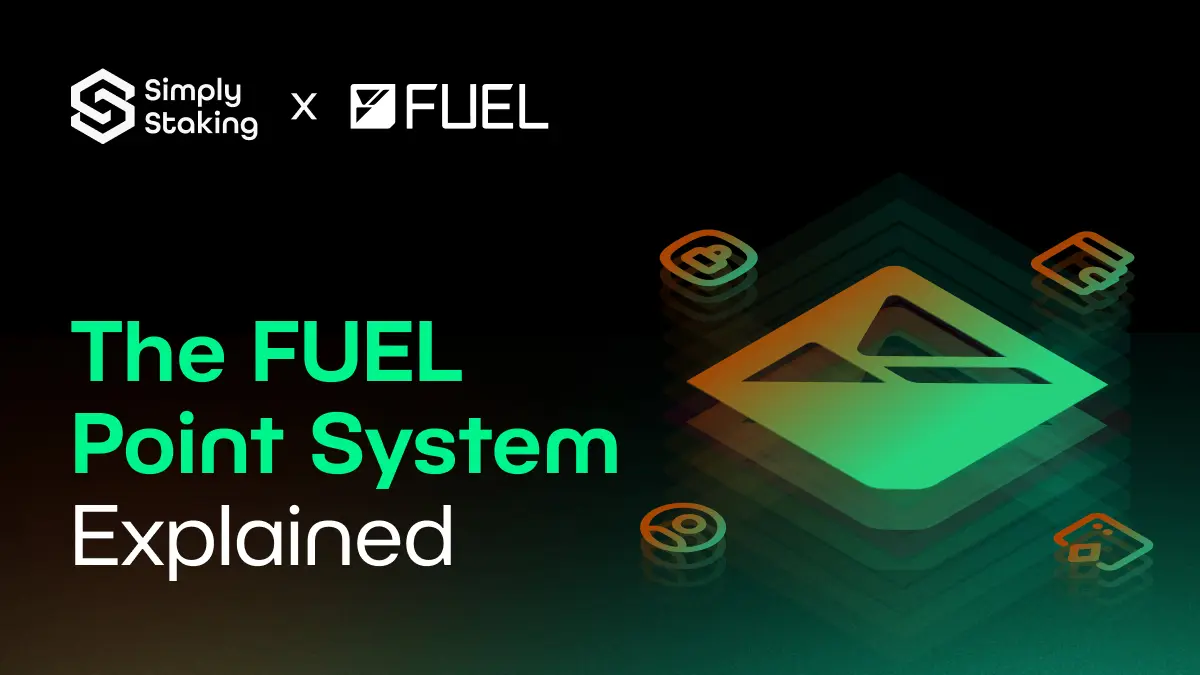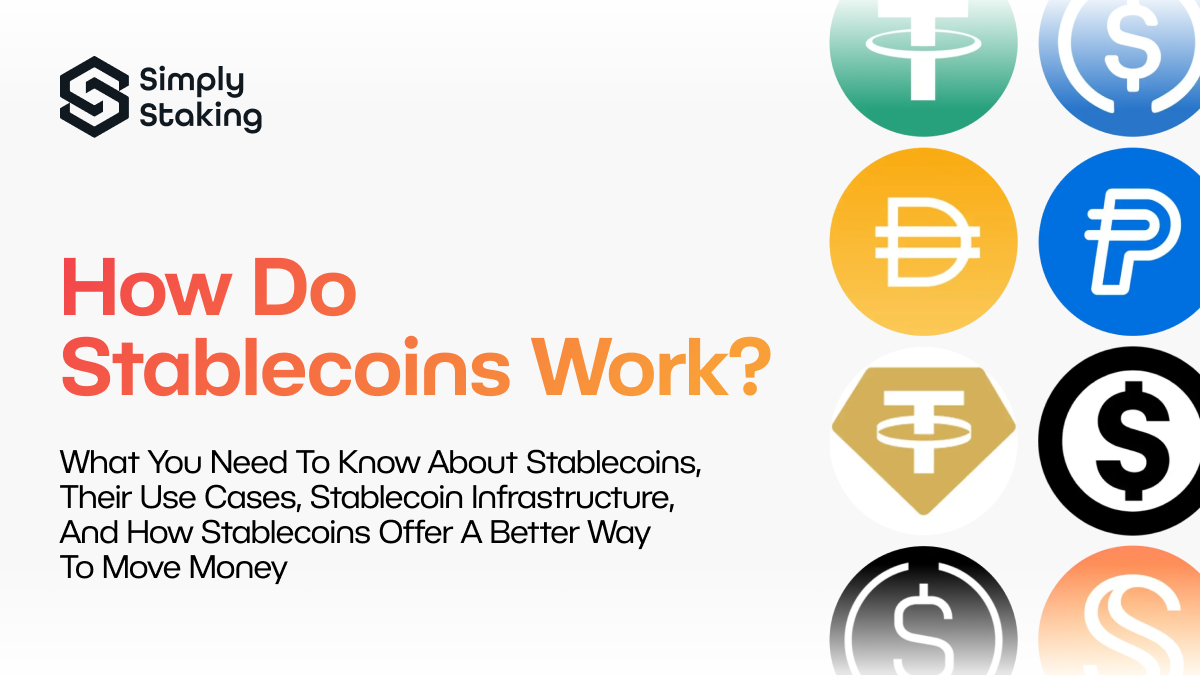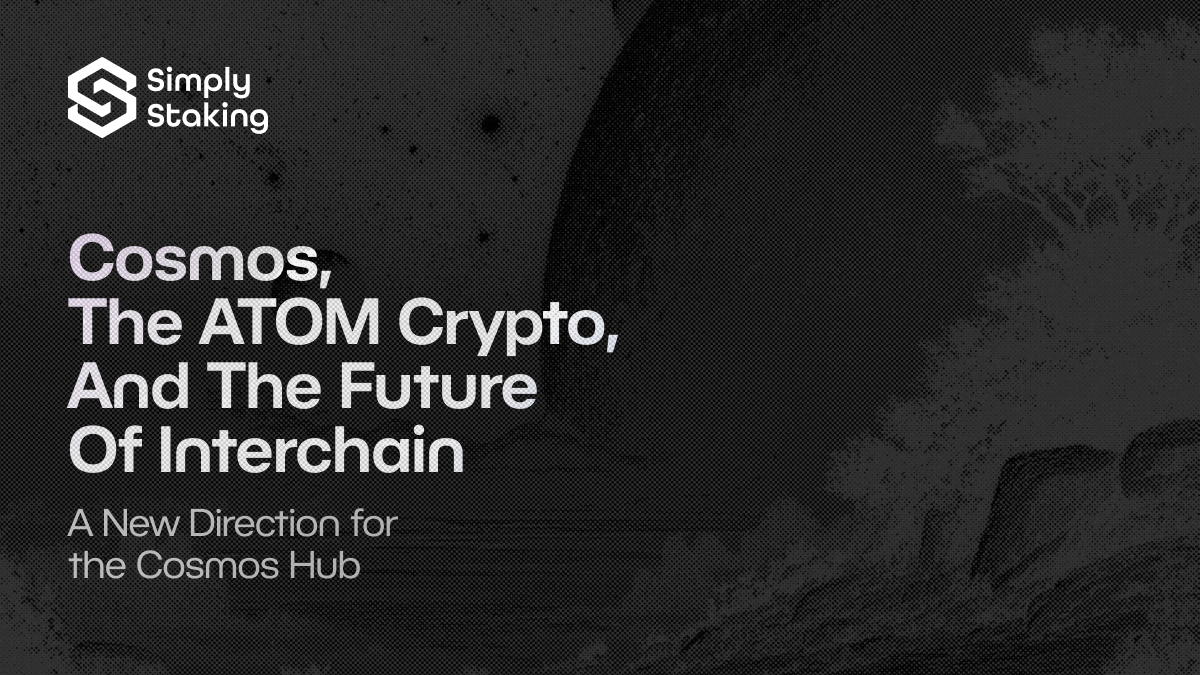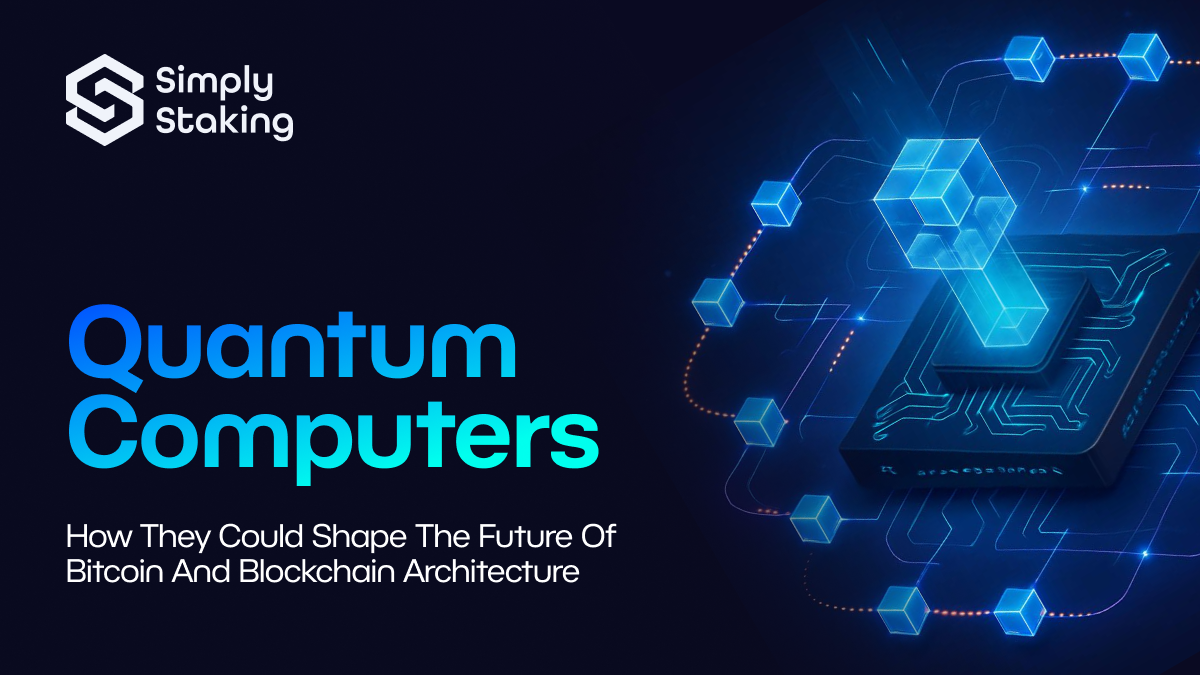What is Starknet?

Starknet may be described as a permissionless Validity-Rollup for Ethereum, allowing any dApp to scale while maintaining composability and security. Making use of its novel, custom-built and specialised programming language called Cairo, Starknet aims to provide secure, low-cost transactions with high performance by utilising the STARK cryptographic proof system. In simpler words, Starknet lets developers implement and deploy dApps that leverage Ethereum’s security and have a higher throughput.
You might be interested in these articles:
Starknet’s Key Features
What sets Staknet apart from the rest of the other L2s? Mainly three key features:
Unlimited Scale
Leveraging “Scalable Transparent Arguments of Knowledge”, known as STARK technology, Starknet is able to validate transactions off-chain by being able to batch thousands of transactions into a single cryptographic proof, which is then submitted to Ethereum. This process increases efficiency while at the same time reducing gas costs. Additionally, Starknet’s scalability is theoretically more scalable than other competing L2s, as its architecture allows the network to be only limited by computational resources that are available to the nodes. This is in contrast to other L2 architecture, such as Optimistic Rollups, which are limited by a 7-day fraud-proof window for finality and significantly delay the finalisation of transactions.
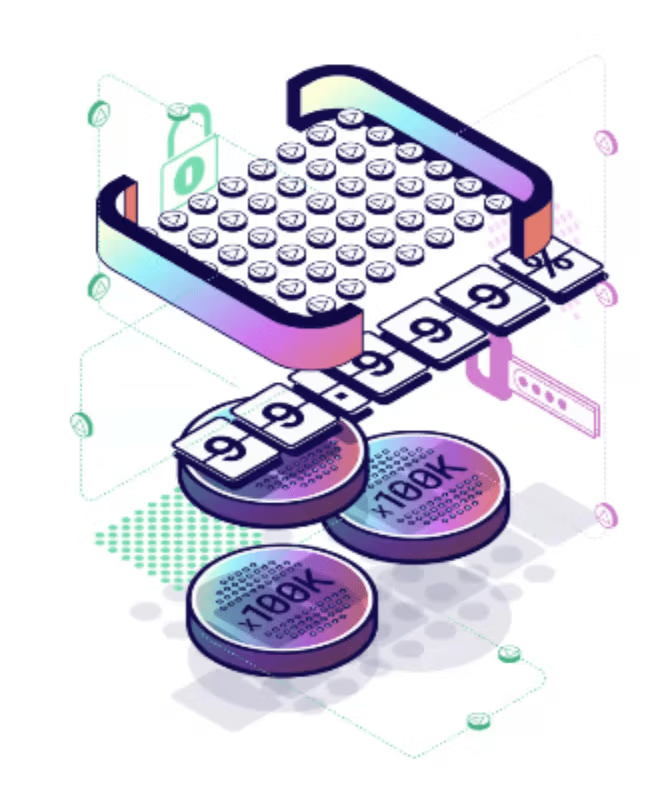
Superior User Experience with Native Account Abstraction
Other L2s often rely on what are commonly known as EOAs (Externally Owned Accounts), which are accounts that are controlled by a private key and not by a smart contract. While in these L2s, additional functionalities are possible, additional layers and contracts are required. Starknet solved these issues by natively integrating Account Abstraction, which allows developers to define how accounts operate, authenticate, and interact with the network.

Developer-Friendly Environment
Starknet offers a comprehensive suite of tools and resources that are designed to both simplify development and spur innovation. Within this context, Starknet’s unique value proposition is Cairo, its own native programming language, which is optimised to write efficient and scalable smart contracts. Starknet CLI, Starknet.js and StakNet.py provide a well-rounded and robust set of tools to empower developers further, while its extensive and comprehensive documentation provides support and tutorials. Furthermore, Starknet also provides developers with a testnet environment called Starknet Sepolia, which allows them to safely test and deploy smart contracts using the Cairo language before deploying them on the mainnet.
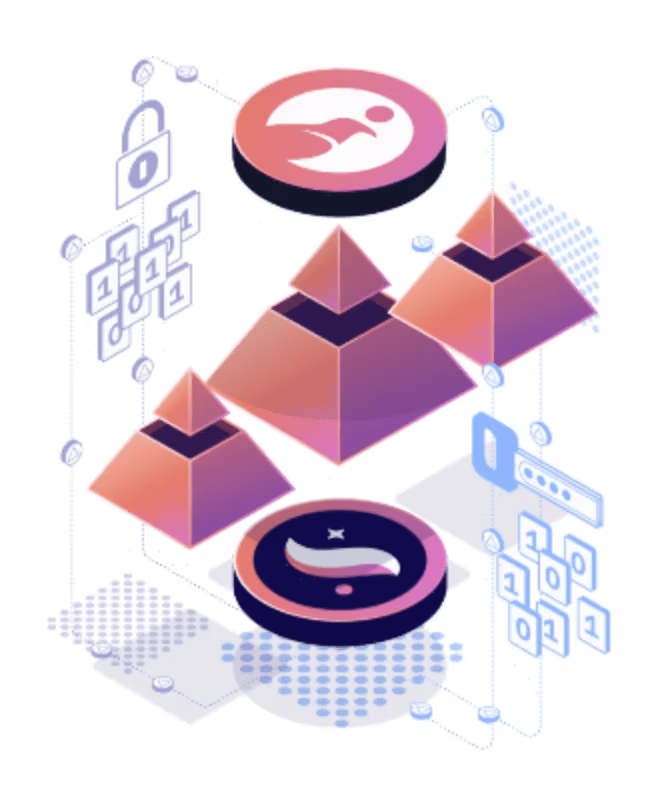
How does Starknet work? A Deeper Dive
To better understand how Starknet works under the hood, one should become familiar with STARK technology and Starknet’s Validity-Rollup mechanism. Together with Sequencers, which are responsible for ordering and executing transactions, and Provers, which generate the STARK proofs from the batches of transactions processed by the sequencers, the system operates while retaining Etherum’s core values of decentralisation and trustlessness.
STARK vs SNARK Technology
Both STARK (Scalable Transparent Argument of Knowledge) and SNARK (Succinct Non-Interactive Argument of Knowledge) are cryptographic proof systems that can efficiently validate computation. Both are used to enhance scalability, but they fundamentally differ in terms of design, security, efficiency, and implementation.
In contrast to SNARKs, which are commonly used in other L2s, STARKs do not require a trusted setup, therefore making them more secure and decentralised and, consequently, more resilient to vulnerabilities or manipulation. Another main advantage of STARK technology is transparency and robustness due to it being designed on standard cryptographic primitives like collision-resistant hash function, which differs from SNARKs, which depend on elliptic curve cryptography and pairing-based assumptions.
The main differences between STARKs and SNARKs can be summarised and better visualised in the table shown below.
STARKs vs SNARKs: Key Differences in Zero-Knowledge Proofs
| Feature | STARKs | SNARKs |
|---|---|---|
| Trusted Setup | None required | Requires trusted setup |
| Proof Size | Larger | Smaller |
| Verification Speed | Faster | Slower |
| Scalability | Better for large computations | Better for smaller computations |
| Transparency | Fully transparent | Limited transparency |
| Use Cases | Scalability (L2s, DeFi, gaming) | Privacy-preserving applications |
| Cryptographic Basis | Hash functions, quantum-resistant | Elliptic curve pairings, quantum-vulnerable |
Validity-Rollup Mechanism
To effectively scale Ethereum while ensuring security and integrity, Starknet’s Validity-Rollup Mechanism makes use of STARKs proofs. Let’s have a quick look at the main details of how this process works.
Step 1: Off-Chain Batching of Transactions
Starknet sequencers aggregate transactions done by users into off-chain batches that contain token transfers, contract interactions, or state updates, which minimises interactions with Ethereum’s L1 and, therefore, lowers gas costs.
Step 2: Generating the STARK Proof
After processing a batch of transactions off-chain and determining the resulting state changes, Starknet creates a compact STARK proof. This proof confirms that the transactions followed and are in line with the protocol rules.
Step 3: Submitting Proof and Data to Ethereum
It is time to submit to Ethereum! The STARK proof, together with a minimal amount of transaction data, is submitted to the L1, where Ethereum’s nodes will have an opportunity to prove using STARK’s efficient verification process.
To better understand the process, have a look at the below diagram.
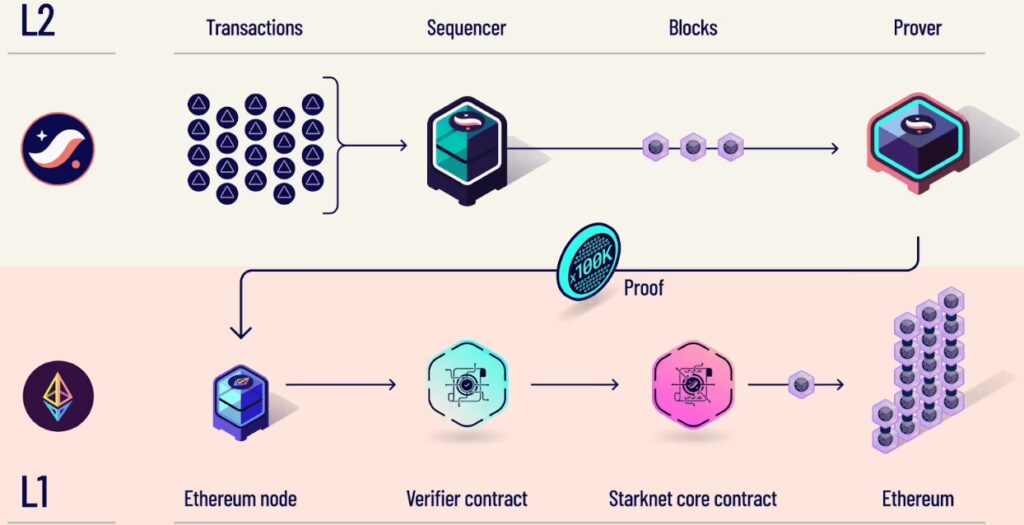
Tokenomics
The STRK token plays a crucial role within Starknet. Let’s have a look at its tokenomics.
STRK’s Utility
- Transaction Fees
Transaction fees on the network may be paid using STRK and ETH, and are paid to validators for providing their services to the network. It is also worth noting that transaction fees that are paid in ETH are converted into STRK by the network before being distributed to validators as rewards.
2. Staking
STRK may be staked to help secure operations such as data availability and sequencing. At the time of writing, a total of 144,134,384 STRK tokens, representing approximately 5.96% of the total circulating supply, are being staked, while the APR is currently 13.33%.

3. Governance
Holders of the STRK token have the right to participate in the governance of the network, which enables upgrades via Staknet’s Decentralised Hub.
STRK’s Supply
The initial pre-allocated supply of the STRK token is 10 billion, which is distributed as follows.
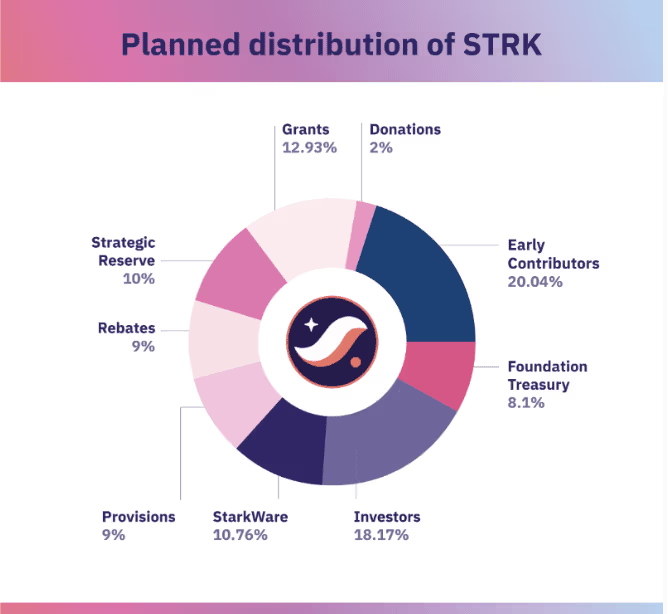
Overview of STRK’s Vesting Schedule
To ensure that the interests of early contributors to the project and investors with the interest of the border Starknet community, all pre-determined token allocations are subject to the following lock-up schedule.
The initial token unlock phase consists of releasing 768 million tokens by unlocking 64 million tokens every month starting on April 15, 2024, and ending on March 15 2025.
The second phase will cover the period between April 15, 2025, to March 15, 2027, where 127 million tokens will be unlocked per month.
To better visualise this, have a look at the below diagram.
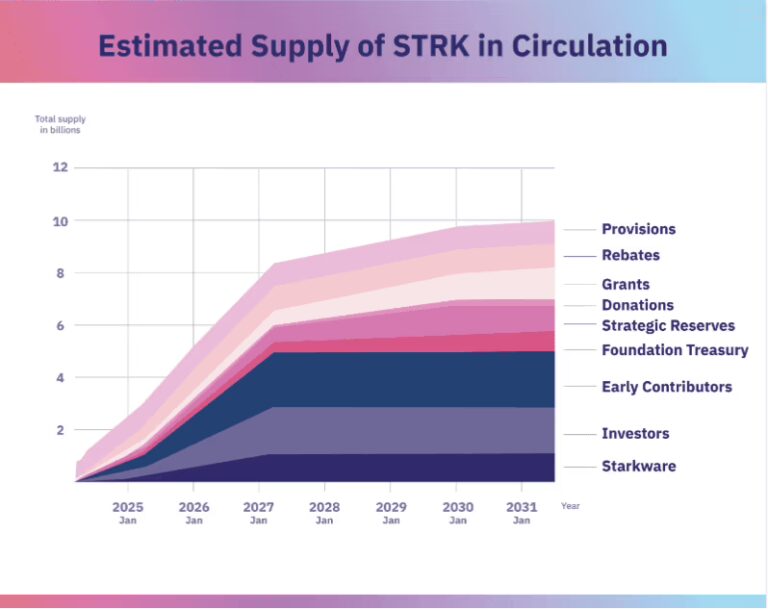
It is important to note that the above information regarding token unlocks excludes newly minted tokens that may come into the circulating supply over time as decided by governance decisions. As long as StarkWare remains the only operator of the StarkNet sequencer, it is clear that there will be no issuance of additional tokens, but considering that Starknet’s community will have a more meaningful role within its governance, they might decide to increase the total token supply, to increase staking rewards, block rewards or other incentives that the community deems necessary at the time.
In simpler words, the 10 billion Token Supply is not necessarily a hard cap.
Starknet’s Ecosystem
A diverse, rapidly expanding network of dApps found its home within Starknet’s ecosystem, which now encompasses a diverse range of projects across various categories, including DeFi, NFTs, gaming, infrastructure, and more.
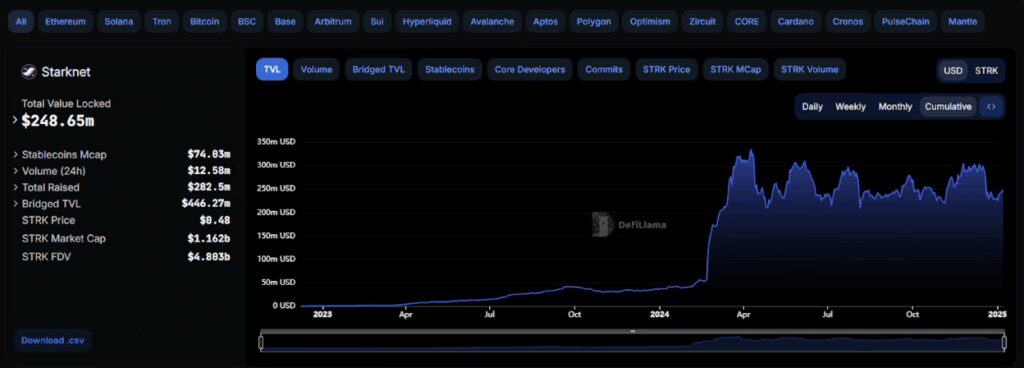
Staknet’s TVL is hovering around $250 million at the time of writing. Let’s have a quick look at the top 3 protocols within its ecosystem by TVL.
- Nostra
Dwarfing all other dApps, Nostra accounts for around 50% of all TVL within Starknet. What is Nostra? Nostra is a DeFi platform which leverages Starkenet’s scalability to provide users with fast, low-cost transactions and seamless financial services, including lending and borrowing, swapping, and bridging services.
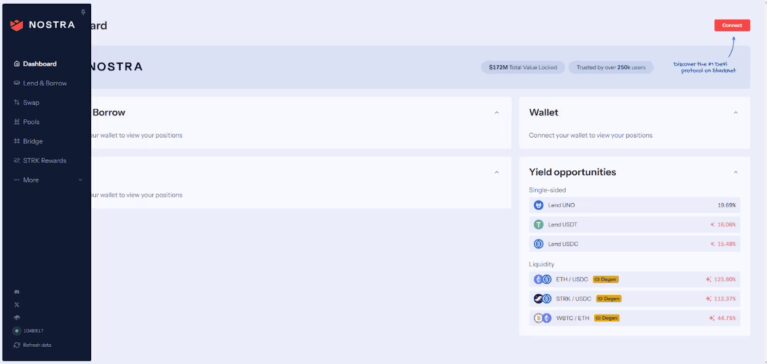
2. Ekubo
Ekubo is an AMM which is designed to facilitate fast, secure, and low-cost transactions.
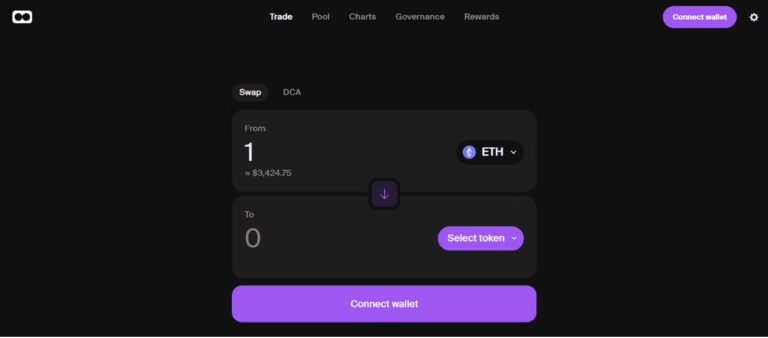
3. zkLend Finance
With a TVL hovering around the $27 million mark at the time of writing, zkLend is an L2 money-market protocol.
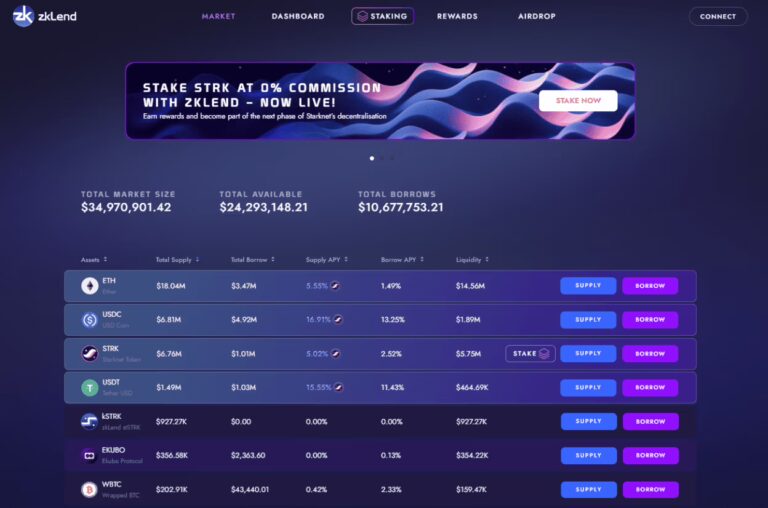
Recent Developments and Future Roadmap
Starknet Staking
On November 26 2024, Starknet Staking went live, allowing for STRK tokens to be staked, which in turn would further secure the network. Users who opt to stake their STRK would have to stake a minimum of 20,000 STRK and run a full node, effectively acting as validators of the network.
Alternatively, users may opt to delegate their tokens to a validator. Use the following link to delegate your STRK and search for “Simply Staking”.
Delegate and earn staking rewards: https://voyager.online/staking
Starknet’s Future
As early as February 2025, key milestones are expected to be achieved, including stateful compression, L2 gas optimisations, and Cairo-native enhancements aimed at reducing fees and improving user and developer experiences.
Another significant milestone is expected to be introduced by April 2025, as Starknet aims to achieve 2-second block times, a fee market, and distributed sequencer architecture, significantly boosting transaction speed, fault tolerance, and cost efficiency.
Conclusion
Starknet addresses Ethereum’s scalability issues through its utilisation of STARK technology to improve transaction efficiency, security and usability. With its ever-evolving ecosystem, developer-friendly tools and a commitment to decentralisation, Starknet makes it possible for developers to build and interact with scalable dApps while maintaining Ethereum’s trustless security.
Explore Starknet’s ecosystem and discover its wide range of dApps, tools and resources, and earn rewards by delegating STRK tokens with Simply Staking.
Additional Resources
Here are useful resources to get started with Starknet staking:
- Explorer: Starkscan
- Analytics: Dune Dashboard
- Documentation: Starknet Docs
- Bridge: StarkGate (ETH to Starknet)
- Wallets: Supported Wallets
Staking: Search for Simply Staking and start earning rewards here.

(Terms & Conditions Apply)
About Simply Staking
We are a Blockchain Services Provider who operates Validators and Nodes on over 30 Networks with over $1 Billion in Assets Staked. Our journey started in 2018, with Simply entering the Cosmos Hub Testnets, and now have expanded our operations to most major ecosystems including networks such as LIDO, Polygon, EigenLayer, Oasis Network, Cosmos Hub, Polkadot, and many more, all while being an Oracle Operator on Chainlink.
We offer additional services such as Nodes-As-A-Service (RPCs), Blockchain Development work, Tooling, Governance Services as well as Blockchain Consultancy Services.
More Information on our offerings can be found on our website.
Disclaimer: This article contains affiliate links. If you click on these links and make a purchase, we may receive a small commission at no additional cost to you. These commissions help support our work and allow us to continue providing valuable content. Thank you for your support!
Terms & Conditions apply on all partnership offers.
This article is provided for informational purposes only and is not intended as investment advice. Investing in cryptocurrencies carries significant risks and is highly speculative. The opinions and analyses presented do not reflect the official stance of any company or entity. We strongly advise consulting with a qualified financial professional before making any investment decisions. The author and publisher assume no liability for any actions taken based on the content of this article. Always conduct your own due diligence before investing.
